For all East Asian readers, wishing you a happy and prosperous Year of the Snake! This report is a fitting way to mark the Chinese or Lunar New Year, given that this flight was a new beginning, or the reopening of a closed chapter in my life: flying a Boeing 737.
For six years I steered clear of it. All of a sudden, ‘I need to fly the 737’!
I cannot help but feel that the below quote, which I saw just above the door while exiting the aircraft — 9M-MXJ is the registration — summed up my feelings on conquering a deep-seated fear of mine.

In mid-June 2024, for the Hari Raya Haji (Eid al-Adha) weekend, I did a brief four-day trip from Singapore to Jakarta and Kuala Lumpur, in order to catch first the Garuda Indonesia A330-900neo to Jakarta, and then the KLM 787-9 on the fifth-freedom route from the Indonesian to the Malaysian capital. I’d previously flown the two SkyTeam airlines a year prior, in June 2023, on my first trip to Indonesia — KLM to Denpasar (on a 777 in SkyTeam colours) and two Garuda A330-300s to Singapore via Jakarta — and wanted to know how these compared a year later. TL;DR: Garuda’s A330-900neo shone and surprised me pleasantly, even as the airline itself continues to struggle with a severely limited route network, but Royal Dutch Airlines’ 787-9 was a comedy of errors between the dysfunctional IFE and moving map (no Wi-Fi either) and the underwhelming (spicy!) vegetarian meal. Much as I’d appreciated the European airline’s flawless service on the flight to Denpasar the previous year — I called that my favourite flight of 2023 — KL810 from CGK to KUL was a real letdown, the vibrant 787 mood lighting aside!
At midnight on Monday, 17 June, I found myself once again at Kuala Lumpur International Airport, some 50 km south of the main Federal Territory of Kuala Lumpur, with taxis rare and expensive. I had an Airbnb booking for the night… which turned out to not accept check-ins at night, so I was (briefly) homeless, eventually arranging a last-minute room in a cheap but modern and clean motel. (Long story!) Starting from there, I explored the world’s third-largest mall — IOI City in Putrajaya — for a bit in the afternoon before returning down to KLIA; venturing into the main city would be far too long. I’m not going to post too many details of yet another mall; I’m a mall junkie, but I realise that mine is a very rare and uncommon species!
I still had one more flight to close the trip, and this one, unlike the other two, was not to experience a new product. Instead, it was a personal accomplishment. And it brought with it a sense of fulfilment and peace: after years of avoiding them, I’d now decided to fly a Boeing 737 — any 737 — for the first time in 6 years and 6 days. I don’t fly Malaysia Airlines all that often, and so this would be only my second flight on MH — the first, in October 2022, being my first on the Oneworld alliance and also the A330(-300). The flight itself was unremarkable — Malaysia Airlines 737s are nothing to write home about, especially as the refurbished ones (like mine) have no more seatback IFE — but that didn’t matter. At least there was a fabulously designed inflight magazine, a highly westernised one at that, and MH’s typography and branding game — despite the subparonboard product — is far and away the best in Southeast Asia.
Moreover, I wasn’t flying to Singapore but instead to Malaysia’s southernmost city, Johor Bahru, which is just across the strait from Singapore. It’s an especially popular weekend outing destination for Singapore residents, and in fact the land crossing from Singapore to Johor Bahru is the world’s busiest. Its Senai Airport (code: JHB) is located some distance to the northwest of the city, and can offer cheaper deals on some AirAsia flights… but, in general, despite the higher ticket cost, the route network that Changi provides is unmatched. Still, since flights from KUL to Changi were limited due to the Hari Raya Haji holiday, this was about as good a deal as I could get, but MH gave me so much more significant than an ordinary 40-minute, limited-service domestic sector.
Disasters like Jeju aside, the 737 — even the MAX — is not an inherently unsafe aircraft
Now 2024 ended on an awful, heart-wrenchingly horrifying note for aviation safety, with the crash of Jeju Air 7C2216 at Muan (MWX), South Korea, on 29 December. The 737-800 registered HL8088 landed on its belly but could not control its speed, and eventually slammed into a concrete structure, erupting into flames that killed 179 out of 181 people and charred their bodies to be unrecognisable — the worst air disaster of the 2020s, beating the shootdown of Ukraine International 752 in January 2020 where all 176 on board perished. Astonishingly enough, however, two flight attendants were rescued from the tail of the aircraft and recovered in hospital, which is a wonder since such disasters almost never have any survivors in the first place.
In fact, a 737 has been involved in the worst air disaster of every year since 2018: Lion Air 610, Ethiopian 302 (the two 737 MAX tragedies), Ukraine 752, Sriwijaya 182 and China Eastern 5735 from 2018 to 2022. The only exception was 2023, where an ATR 72 crash of Nepal’s Yeti Airlines in January was the worst.* In 2024, too, another ATR 72 (of Brazil’s Voepass) was the deadliest accident until being overtaken by the Jeju Air tragedy at the very end. It goes without saying that none of them (except 7C2216) had even a single survivor! Nevertheless, that does not make the 737 any less safe than the A320 family, even though the crash of Pakistan International 8303 in mid-2020 — again, like Jeju, only two survivors — remains the only A320 disaster in the last five years or so.
In spite of these disasters, I will not hesitate to fly a 737 again (including the MAX) wherever required, as the aircraft itself does not become inherently unsafe because of a few freak accidents. Indeed I flew the Singapore Airlines 737 MAX to Phnom Penh, Cambodia, in November 2024, and will fly on more 9M-registered (i.e., Malaysian-operated) 737s soon: Batik Air Malaysia (from Bengaluru) in February, and MH once again — in Business this time — at the end of March. (Not that the seats on MH 737s are any good; instead the purpose is to wine and dine at the renowned Oneworld lounges at Changi Terminal 1, like the Qatar Premium Lounge!)
That said, I will prefer the A320 family if possible where narrowbodies are concerned, as it accounts for the lion’s share of aircraft in India — with IndiGo alone accounting for hundreds of A320neos and A321neos, being the world’s largest operator of both — and is operated by most LCCs in Southeast Asia as well. However, widebodies will always be my first choice overall, and I’m lucky to have access to so many widebodies in Southeast Asia, which are few and far between on Indian domestic and short-haul international flights.
*2025 has started with another non-737 tragedy: the collision of American Eagle 5342, a Bombardier CRJ700, with a US Army helicopter on 29 January — a month to the day after the Jeju disaster — near Reagan National Airport (DCA) near Washington DC. With both aircraft crashing into the Potomac River, of course, not one out of the 67 people on board both aircraft lived to tell the tale. This really is turning out to be a terrible period in global aviation safety… but it still remains incredibly safe, every day.
Flight routing
- 1
- 2
- 3MH1057 | Kuala Lumpur to Johor Bahru | 17 June 2024 | 737-800 | 9M-MXJ
Some rare visitors on the way to the world’s third-largest mall
Monday, 17 June, morning. After checking out of the last-minute hastily arranged motel near KLIA, I headed to IOI City Putrajaya, which is now the world’s third-largest mall by floor area after Iran Mall and the Avenues Mall in Kuwait.
En route, I was tracking the recent visitors at KLIA, including 9V-MBL, the Singapore Airlines 737 MAX in Star Alliance livery, and… what was this I was seeing now? A Pakistan International Airlines 777-200ER and an Uzbekistan Airways A321neo?! Airlines you’d never see in Singapore! Such airlines from lower-income countries always prefer Bangkok to Singapore, but PIA cannot even afford to fly to BKK. That said, despite many airlines shunning Pakistan, Thai Airways serves the three biggest cities in the country — Islamabad (ISB), the capital; Karachi (KHI), the commercial hub; and Lahore (LHE) — and Batik Air Malaysia (but not Malaysia Airlines) serves KHI and LHE, with PIA flying to Kuala Lumpur a few times weekly from ISB and LHE.
Moreover, there was an A320, XU-725, of Cambodia’s Sky Angkor Airlines, which was operating on behalf of Myanmar Airways International. Two more exotic airlines rolled into one!

The mall itself did not strike me as particularly massive, at least from the front façade — unlike the Lotte Mall Hanoi West Lake, which I visited on New Year’s Day 2024 and which is as huge as it’s opulently glamorous. I’m not going to bore you all again with repetitive pictures of another sprawling megamall, but…
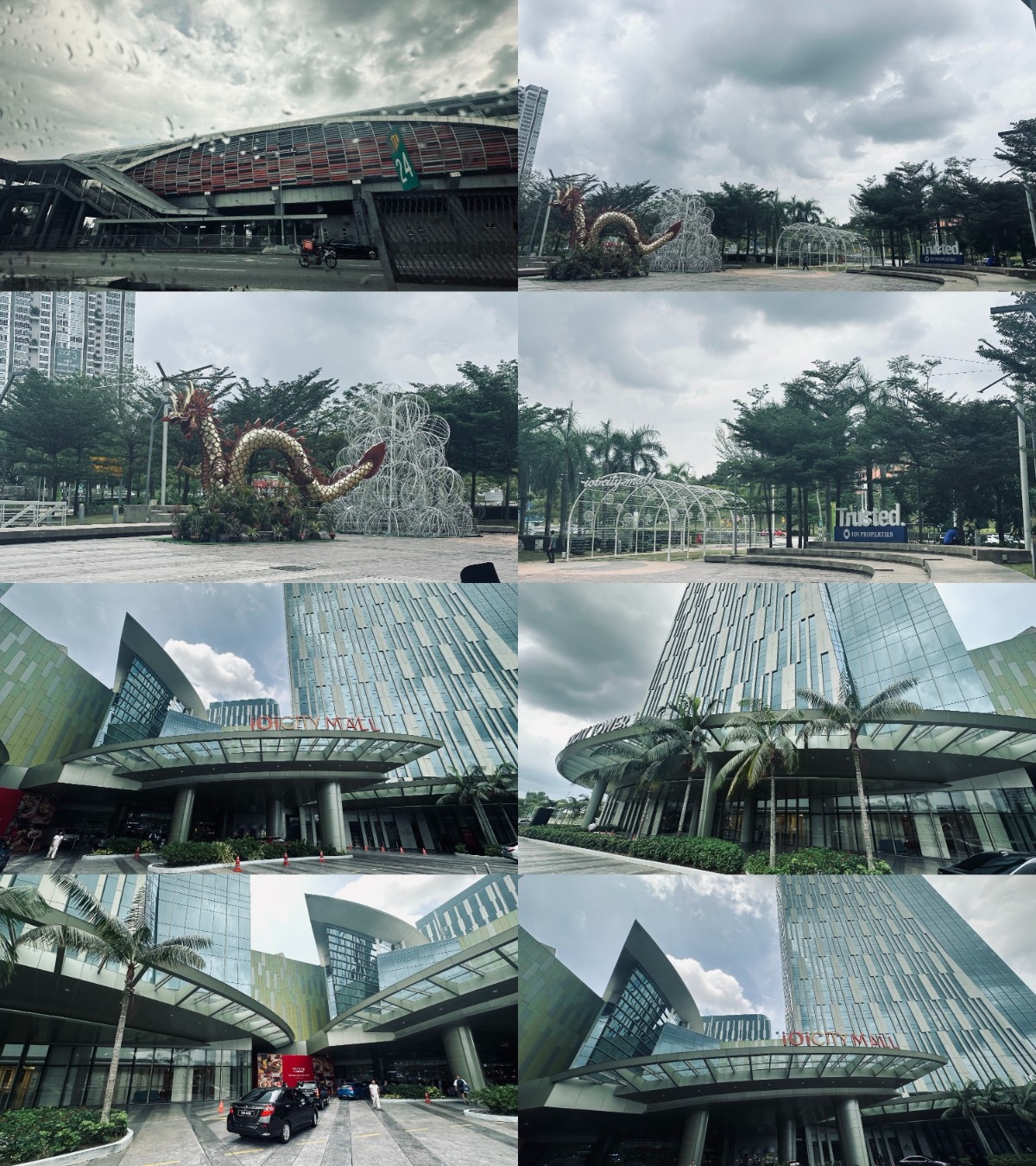
…I HAD to make an exception for the Christine’s bakery, one of the most pleasantly designed bakery chains I’ve seen in Southeast Asia. In fact, this was the main motivation behing a four-hour trip to Kuala Lumpur, involving (crazily enough) an Ethiopian Airlines 787-9 and a Jetstar Asia A320, that I’d taken at the end of July 2023!

Afternoon. With the skies overcast, it was time to take a taxi all the way back to KLIA… well, almost time. I didd a brief stroll around the outdoor premises of the mega-complex and killed some time. The gardens were pleasing to the eyes, and the fact that they were located beside a five-star hotel, the Le Meridien Putrajaya, added to the visual allure of the place.
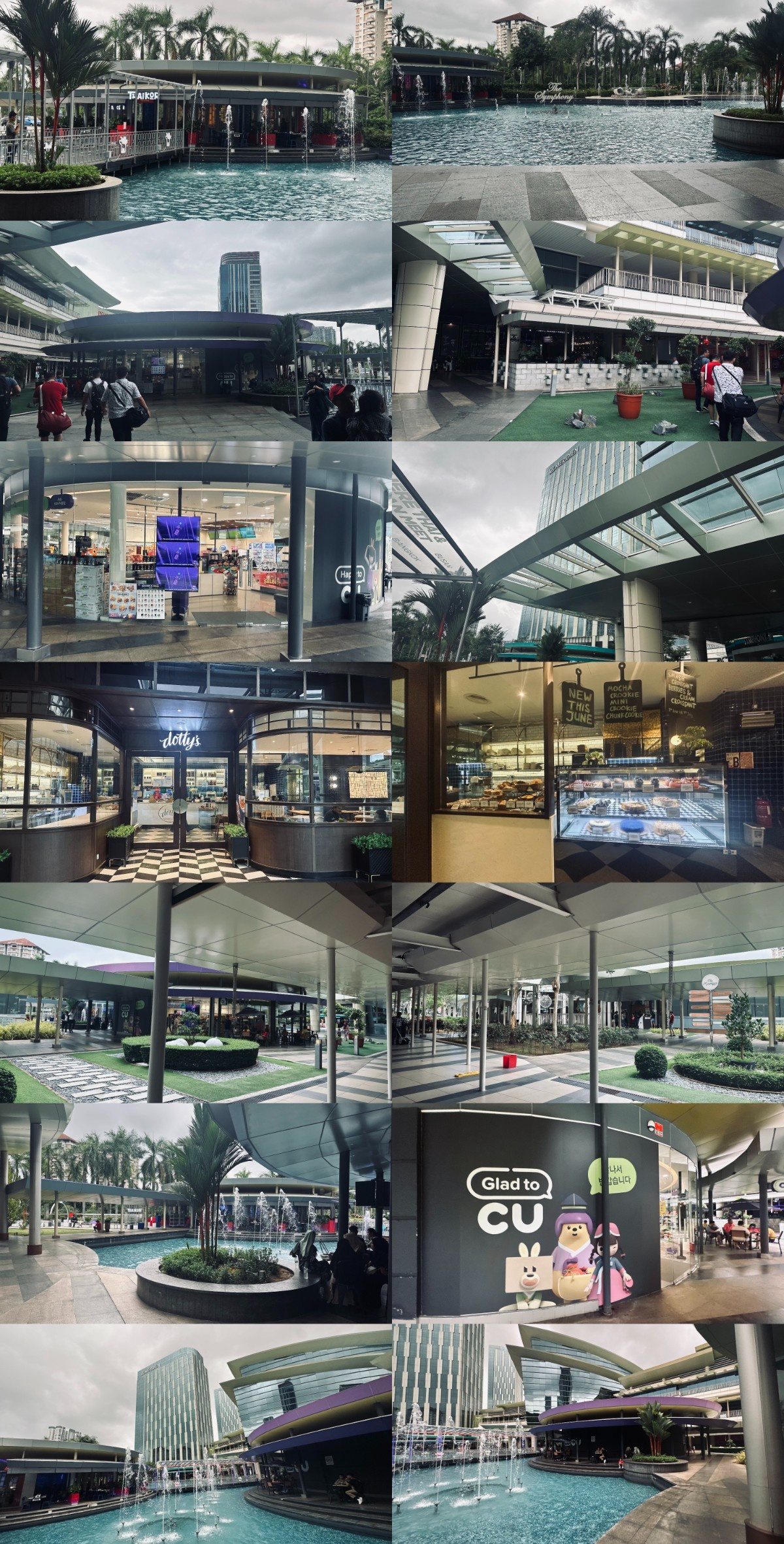
As a parting touch, a sinfully sweet taste of cheaper Malaysian prices, I headed to a bakery called Pokok with gorgeous aesthetics and lighting, and looked at my flight history on Flightradar24 on my laptop.

As I informed my family that I’d be heading back to KLIA, I took a look at the incoming aircraft, including the KLM 787-9 from Amsterdam that would now continue to Jakarta. Some other visitors included Emirates and EVA Air 777-300ERs and a Saudia 787-10.
As far as the upcoming departures were concerned, the scheduled aircraft for my flight, MH1057 to Johor Bahru, was oddly showing as an A330. Of course it was corrected to a 737-800 afterwards, but can you imagine an A330 flying from Kuala Lumpur to Johor Bahru? To Singapore, yes, in the 2010s when SQ was flying A330s and hadn’t any A350s yet, but not a low-yielding domestic route like this! There was an interesting A330 departure, however — Batik Air Malaysia’s 7-hour journey to Tashkent, Uzbekistan! (Heck, even that one is operated by crushingly uncomfortable 737 MAXes sometimes…)
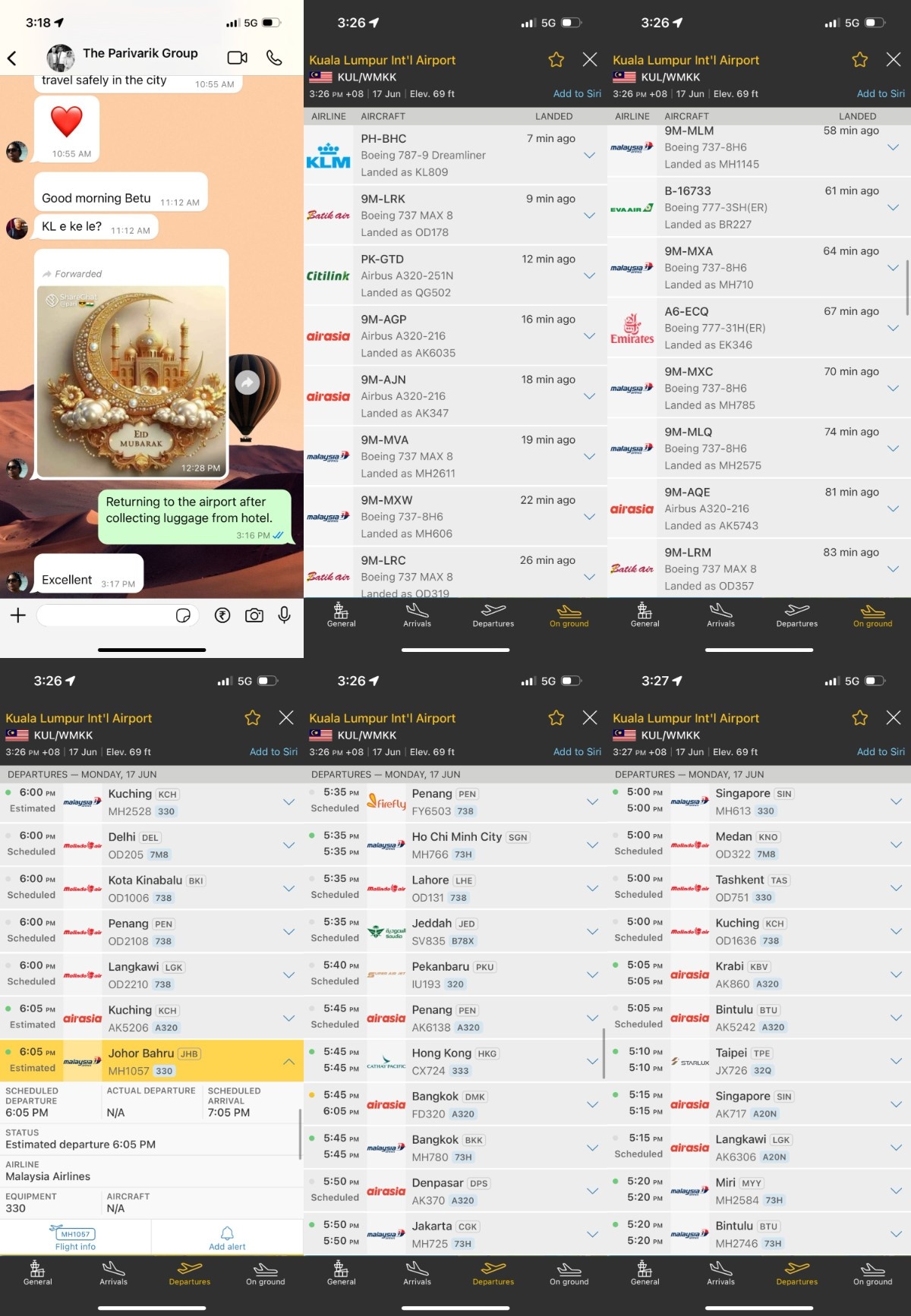
Anyway, my time at IOI City Putrajaya had come to an end, and soon enough a blue Perodua Bezza sedan turned up to whisk me to the inn where I’d kept my luggage after checking out. The Bezza is absolutely everywhere in Malaysia, especially with Perodua being the country’s national car company with nearly half of the market share. Indeed, almost all of my car rides — including later from Senai Airport to Johor Bahru’s land checkpoint complex — on this day were on Bezzas.

It was raining a bit, and that gave me some time to pause and stare at the pretty urban-meets-rural surroundings with modern buildings interspersed with coconut trees, as an A320 of Indonesian budget carrier Super Air Jet took off, bound for some second-tier city. (Banda Aceh in Sumatra, I believe.)

Before long, KLIA’s main terminal came into view, with panoramic vistas of Batik Air Malaysia 737s and A330s. It was quite a fast ride from mall to hotel to airport — and that’s coming from the Federal Territory of Putrajaya, midway between the main city of Kuala Lumpur and the airport. For the long commute that it entails, a glimpse of those arches is always a welcoming sight and a warm Selamat Datang to Malaysia’s primary international gateway.
KLIA lies in Sepang, at the very bottom of Selangor state, near the coast — and, at 50+ km south, is easily the furthest major Southeast Asian airport from the city centre. On many other days, the commute from the city all the way down to the airport can grate on one’s nerves, but fortunately that’s never been my experience. (Bengaluru is a different story, with Kempegowda Airport some 35 km northeast of the city centre — but nearly 50 km to my family’s house in the southern suburbs — and I should be lucky if I can cover the distance in an hour and a half!)
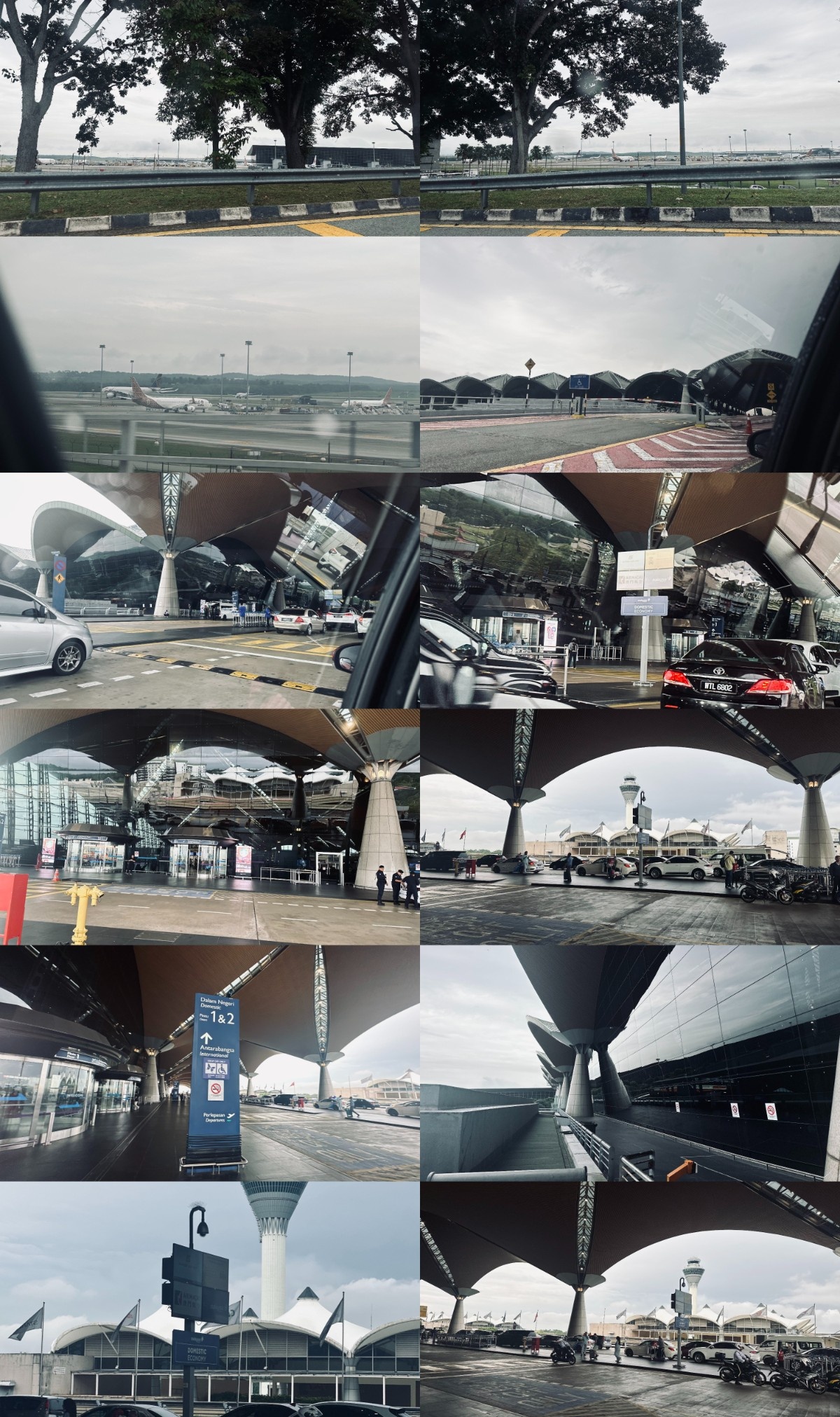
KLIA domestic departures, for the first time
Once inside the sprawling Terminal 1 building, its huge ceiling arches unmissable, I went to the domestic check-in counters for the first time ever. Here the main tenants, as you’d expect, are Malaysia Airlines (plus its subsidiary Firefly) and Batik Air Malaysia — 737 operators all — as the A320-operating AirAsia has its big hub at the much poorer-looking Terminal 2, previously called KLIA2.
I was shocked at the huge number of codeshares for my flight to Johor Bahru, including both global airlines like Singapore Airlines, China Airlines, Qatar Airways and Oman Air, and regional operators like Royal Brunei Airlines, Myanmar Airways International and Philippine Airlines. Of all these airlines, Qatar Airways was the only Oneworld alliance partner of Malaysia Airlines — though Oman Air is also joining in June 2025 — which goes to show just how much MH added codeshares beyond its alliance membership to include smaller airlines, and even its rival SQ! (Full resolution here.)
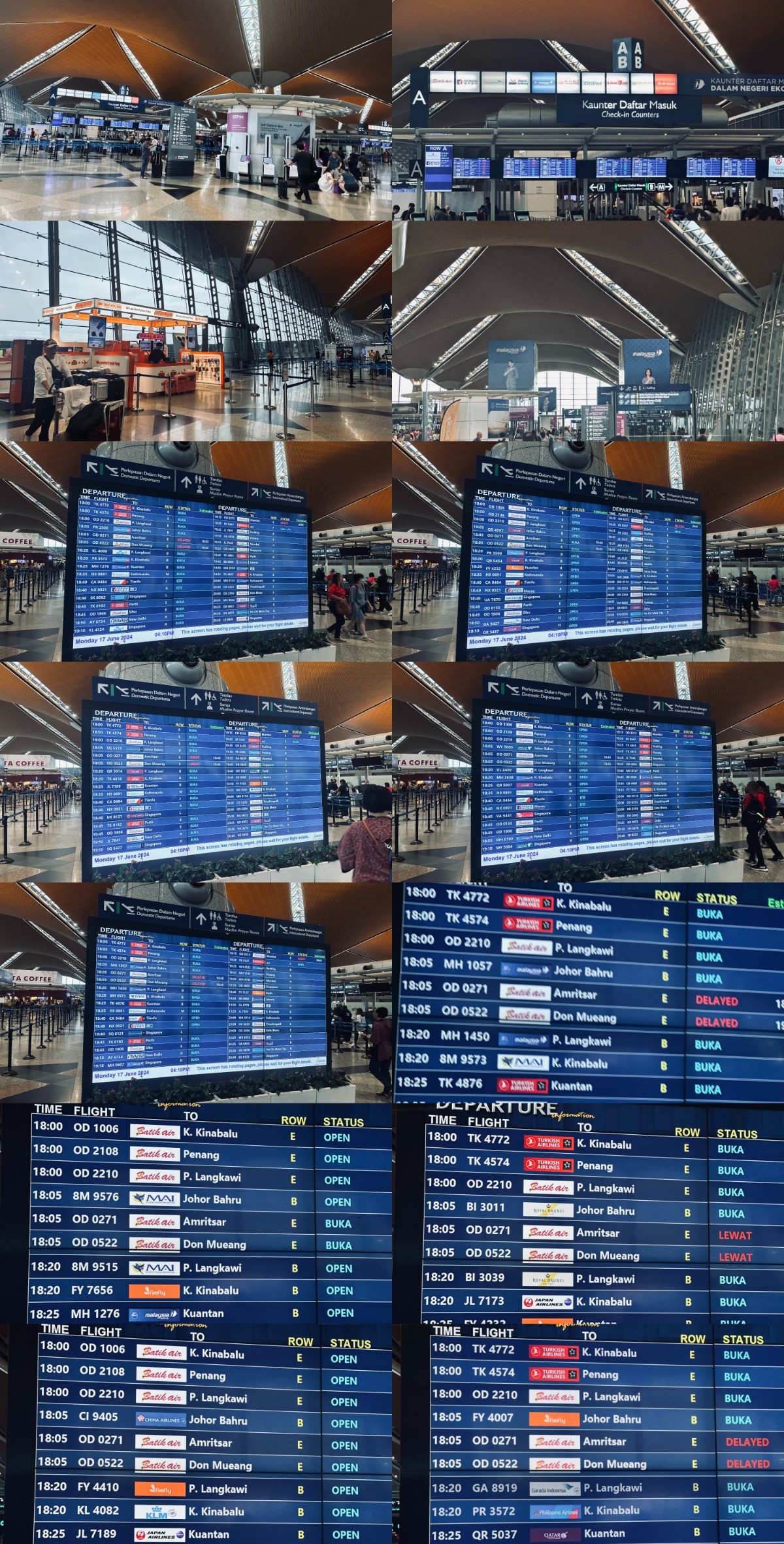
The self-check-in kiosks were fairly easy to use, as were the self-operated baggage-drop kiosks, and functioned similarly to the ones in Changi. I decided against signing up for EZPaz, Malaysia’s equivalent of India’s DigiYatra facial-recognition-based authentication system, as I certainly wouldn’t be using it!
Note that Malaysia Airlines insists on placing the Oneworld logo to the left of its own, which is also what Qatar Airways does. Other members of the alliance keep the blue circle to the right. Yet there are occasions where MH cannot control the placement of the alliance logo, as seen in the drab white boarding pass below.

There being no immigration for this domestic sector — I’d be taking care of that several hours later, at Johor Bahru’s land checkpoint at the causeway connecting to Singapore — it was just a simple security check, and I was in the domestic part of KLIA’s main terminal. Again, I quite liked the aesthetics and ambience of the terminal, and the retail options, while not as exhaustive as those in the international side, were excellent for what they offered.
This is the opposite of Indian airports, where domestic terminals’ retail offerings outweigh the (often measly) F&B options in international terminals — with Mumbai’s awesome T2 being the only major exception that I can think of, since domestic and international passengers share the same retail space. Sadly that’s not the case at BLR T2, whose international section’s F&B is negligible!
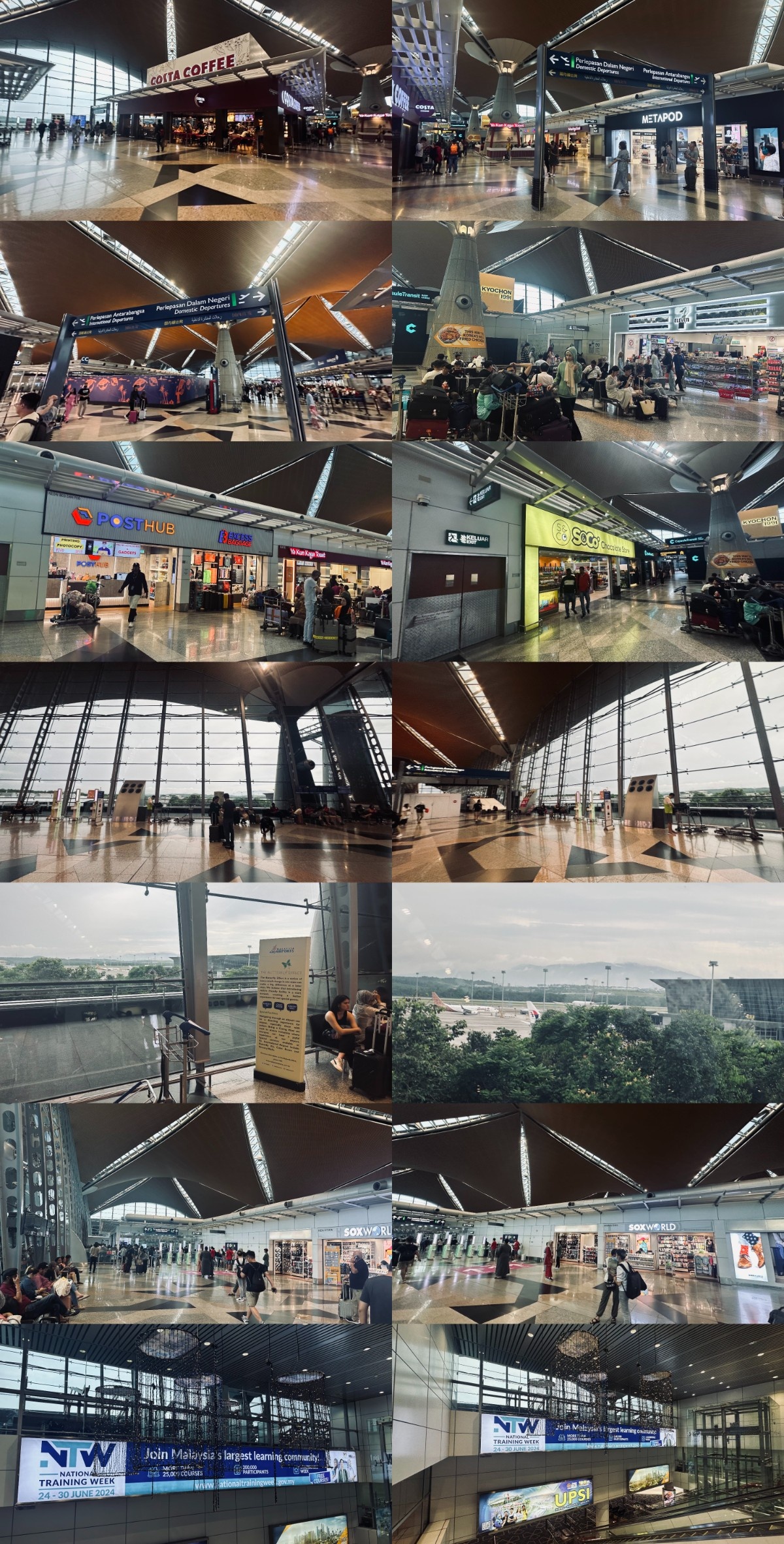
Going down a level took me to the main retail corridors, and there was plenty of planespotting to be done. Below you see 9M-MVA, MH’s first 737 MAX, which was delivered in late 2023, featuring a straightened-up tail design with a yellow songket pattern overlaid on it. This variation is exclusive to the 737 MAXes, and is emblematic of just how diverse (or inconsistent?) MH liveries can get. Indeed, the Negaraku livery design that’s the fleetwide standard today, with the flowing flag, was initially only found on certain aircraft.

At some point my mom called me an ‘itinerant traveller’, given my knack of escaping to random Southeast Asian countries — most recently Cambodia in November 2024, also involving a Qatar Airways fifth-freedom sector. Some time later, the KLM 787 was prepared to leave for Jakarta, while a Turkish 777 had landed.

After some more ambling around, I reached Gate A10, at the far end of the domestic concourse. I appreciate how KLIA Terminal 1 is low-ceilinged, much like Changi Terminals 1 and 2, and also has plenty of appealing, lower-priced retail options. In this regard it’s similar to Terminal 2 at Mumbai’s Chhatrapati Shivaji Maharaj Airport, where the retail area and gates are a level below the check-ins.
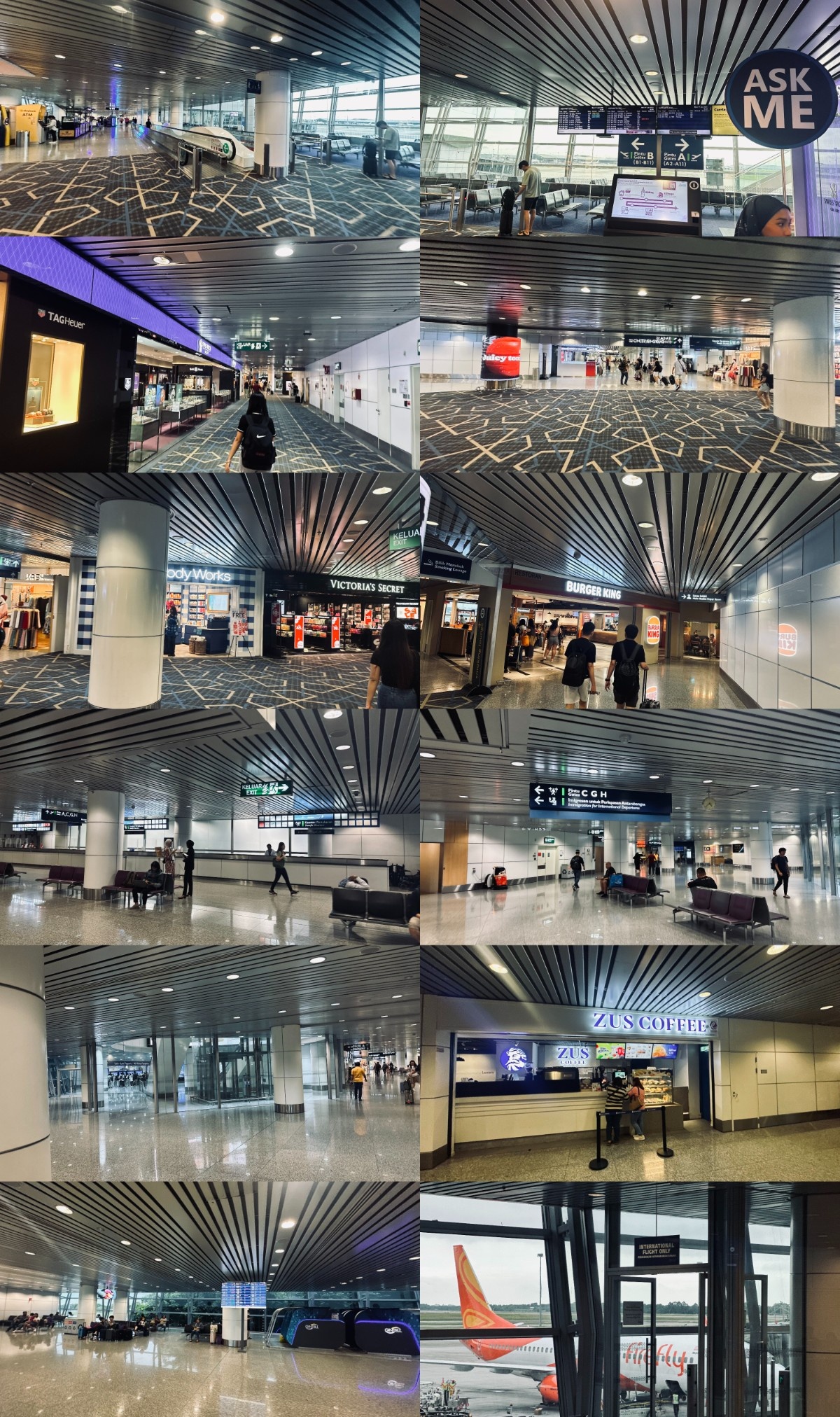
Not a place for A320 lovers — go to the ‘budget’ KLIA2 for that
The predominant aircraft here, in KLIA Terminal 1’s domestic section, is the 737 by a landslide — given that Malaysia Airlines, its regional subsidiary Firefly and Batik Air Malaysia all operate it. All the A320s are at the low-cost Terminal 2, dominated by AirAsia — including some that it got transferred from the short-lived MYAirline, which went bust in October 2023.
In fact, the previous day (16 June 2024) was the first time in 13 years that Firefly operated out of KLIA, with a 737 at that! FY’s fleet consists mostly of ATR 72 turboprops that fly out of the smaller Subang (SZB) airport to the west of the main city — though, since August 2024, narrowbody jet aircraft can fly there as well, something that was prohibited for over two decades. Conversely, Batik Malaysia has ditched its ATR fleet, flying mostly 737s from both KUL and SZB, and now also a few A330s.
I reached the gate at around 5 o’clock, and a FY 737 (9M-MLF) pulled out to depart for Penang, in only its second day operating at Malaysia’s biggest hub. Meanwhile a Batik Indonesia 737 pulled up, and before you call that out as weird in a domestic terminal, note that many Batik Malaysia flights are operated by PK- (Indonesian-) registered aircraft!
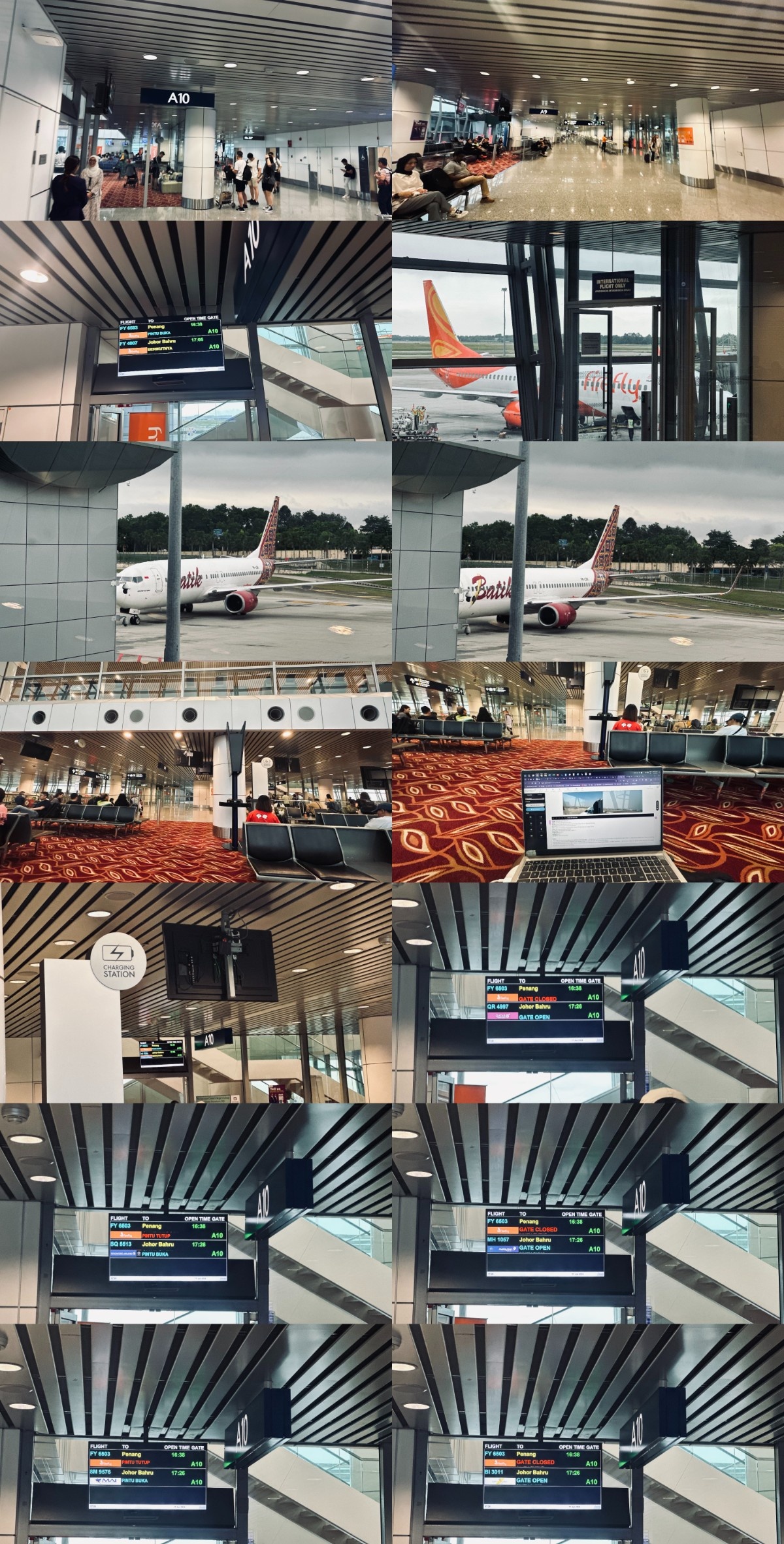
Among the various advertisers at the airport was HSBC, which seems to be a staple at many an international airport, from Dubai to Hong Kong to Mumbai (and of course Changi) — as this article by Simple Flying shows.
On a pedantic note, this mother–daughter ad says: ‘I invested in ideas / Now I invest in her’, though the previous day I saw another ad at Jakarta’s Terminal 3 with the same mom–kid pairing but a different message: ‘I invested in my future / Now I invest in hers‘.
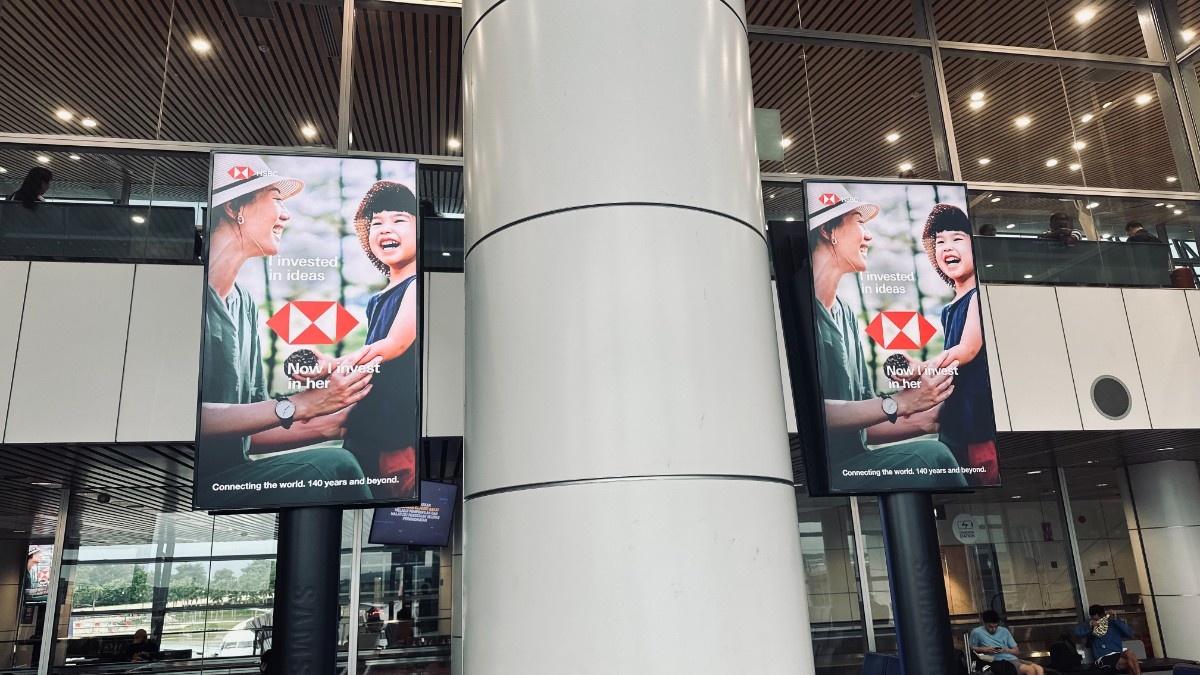
All too soon, the FY 737 was out of the gate, as a Qatar Cargo 777 became visible in the distance. 9M-MXD, a regular MH 737, was taxiing on the runway, having landed from Singapore as MH620, as 9M-LFC, a Batik Malaysia A330-300 with a very bare-bones tail, stood in the distance. Another Oneworld airline, JAL, announced its presence shortly thereafter with a 767-300ER (JA618J) that had landed as JL723 from Tokyo Narita.
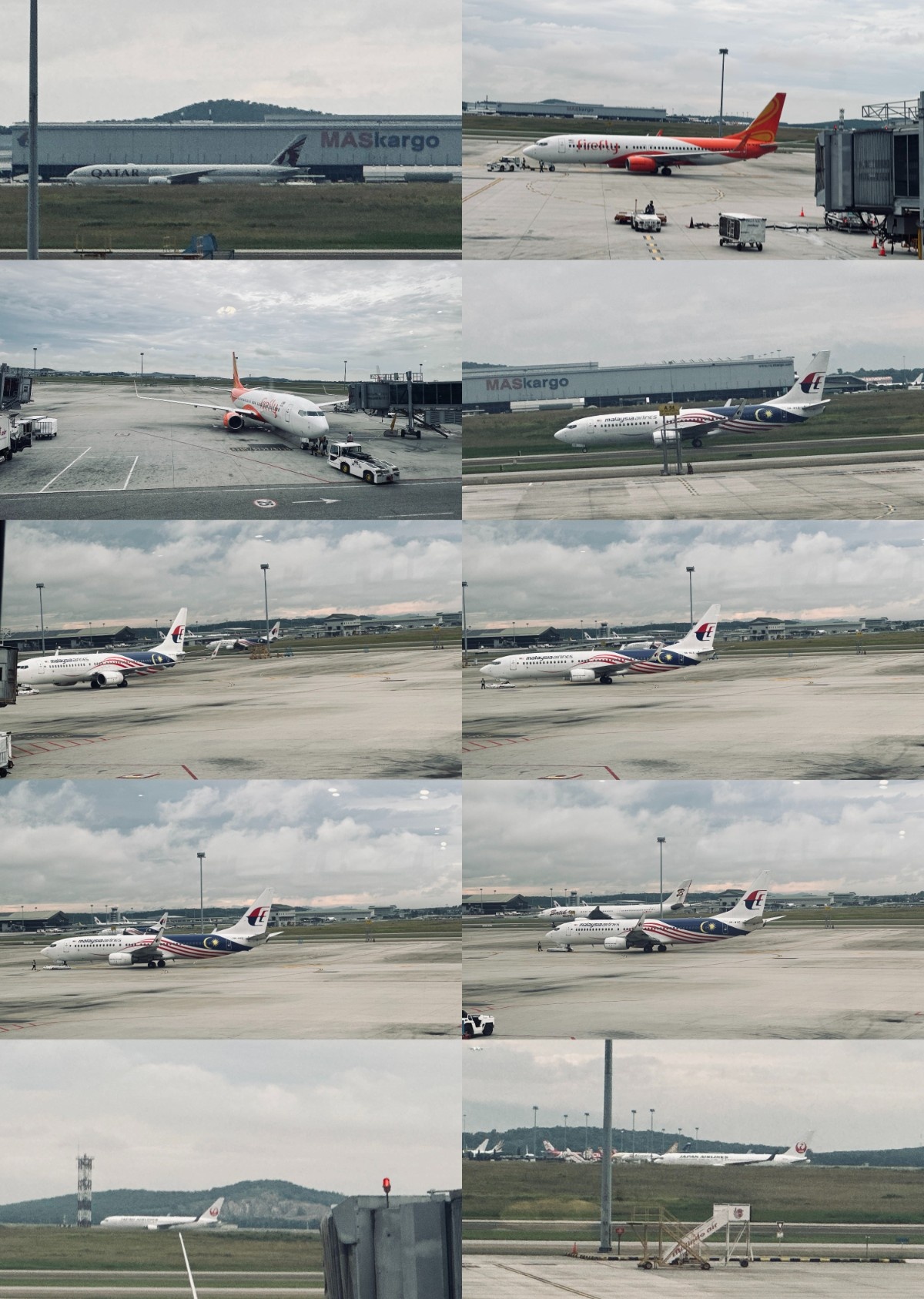
And now the 737 that I’d now be stepping on pulled up to the jetbridge. Its view was completely obscured by the jetbridge, but I did manage to capture the two letters on the nosewheel door: XJ. So 9M-MXJ it would be then! This had just arrived from Hanoi as MH753, and would now take me one step closer to Singapore — and towards a sense of freedom.
These are also the final two letters of Japan Airlines’ domestic A350-900s, which are numbered JA01XJ onwards — and the one that crashed at Tokyo’s Haneda Airport at the start of 2024 (with everyone miraculously escaping) was JA13XJ. (For comparison, JAL’s A350-1000s, with their globally acclaimed world-beating first- and business-class suites, have the suffix WJ.)

By now a Saudia 787-10 was about to take off as SV835, and yet my flight still showed on Flightradar24 as being operated by ’330’! Not that it mattered, not when the actual 737 was standing right at the gate, though I couldn’t catch any better of a view.
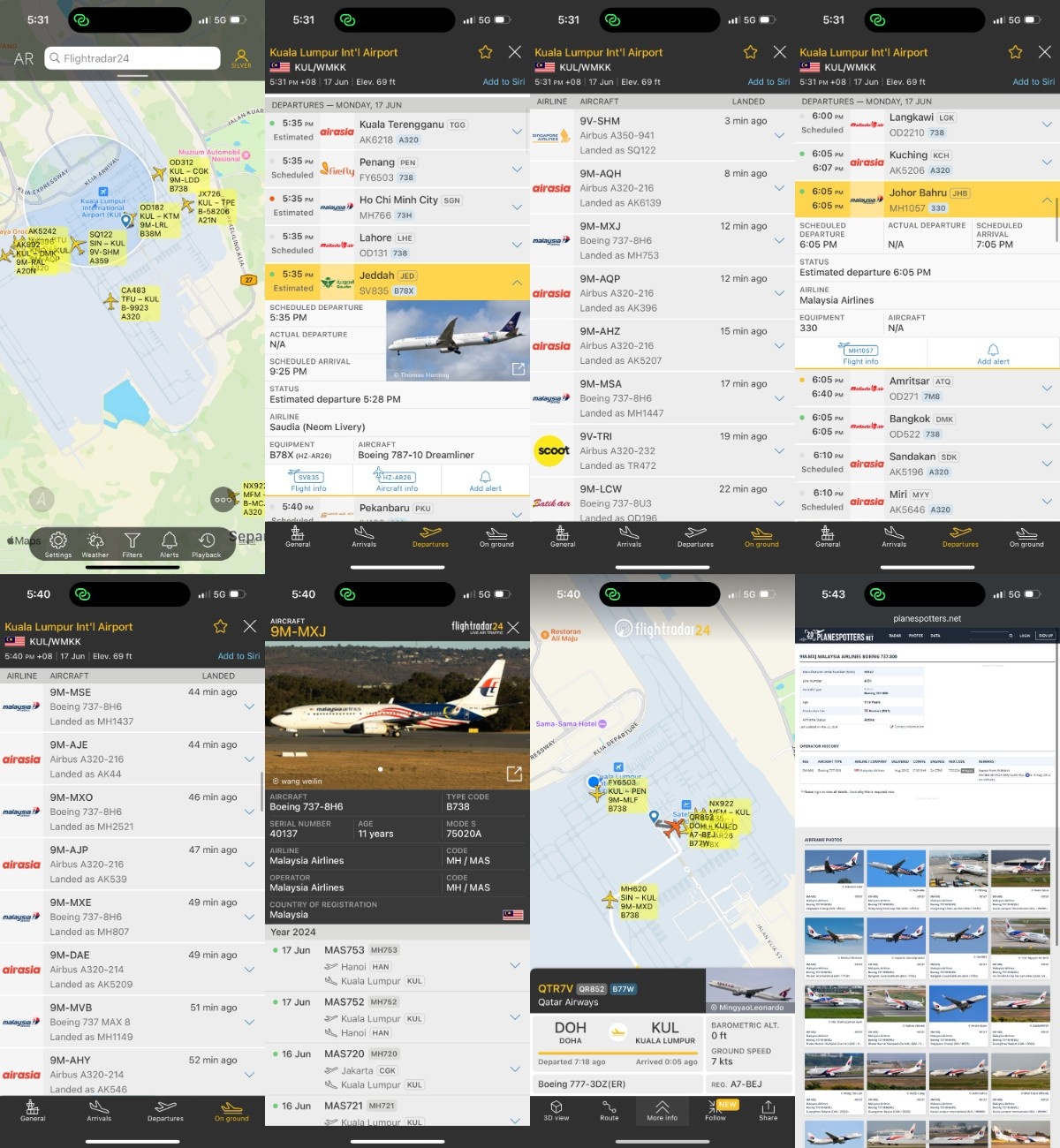
Now was a good time, as I stood in the queue to board, to look back to One Mile at a Time’s article on how MH dumbed down its 737-800s with an environmental spin. The removal of seatback IFE (not that bad) and not having AC power outlets in economy (not good!) is an obvious step towards lightening the weight of the plane, and hence plays a part in ‘greenwashing’.
On routes longer than 4 hours, these changes really start to hurt, especially given how 737-heavy MH is, unlike SQ and Thai Airways with their widebody-dominated regional operations. This is NOT an airline that will fly the A330 or A350 anywhere closer than Mumbai, Tokyo or, at the bare minimum, Perth — too bad if you’re expecting a widebody to Hong Kong or Bengaluru!

As I was boarding I managed to catch an A320 (9N-ALW) of Nepal’s Himalaya Airlines, which operates entirely international flights from Kathmandu’s Tribhuvan Airport (KTM), until very recently the only international gateway to the mountainous, dangerous-for-aviation country.

Now, call me crazy, but there are two things in aviation that I simply cannot bear to look in the eye: the pointy nose of the 737 — and the 707 and 720 and 727, for all the boomers out there — and the blue-circle logo of Oneworld. For no reason, I cannot look at them without feeling weird inside: just one of those irrational feelings that I have. And yet here I was, boarding a Boeing 737 of a Oneworld airline, with that circle just below the Malaysian flag at the entrance… and feeling completely normal and cheerful!
It took me many years to come this far, but I had to do away with irrationality at some point in my life. Might as well do it now, I figured, and let 9M-MXJ — as the plate above the entry door confirmed — be the vehicle to do so… but it was only when I stepped off, an hour later, that that quote at the beginning of this report gave a whole new meaning to this unremarkable flight!
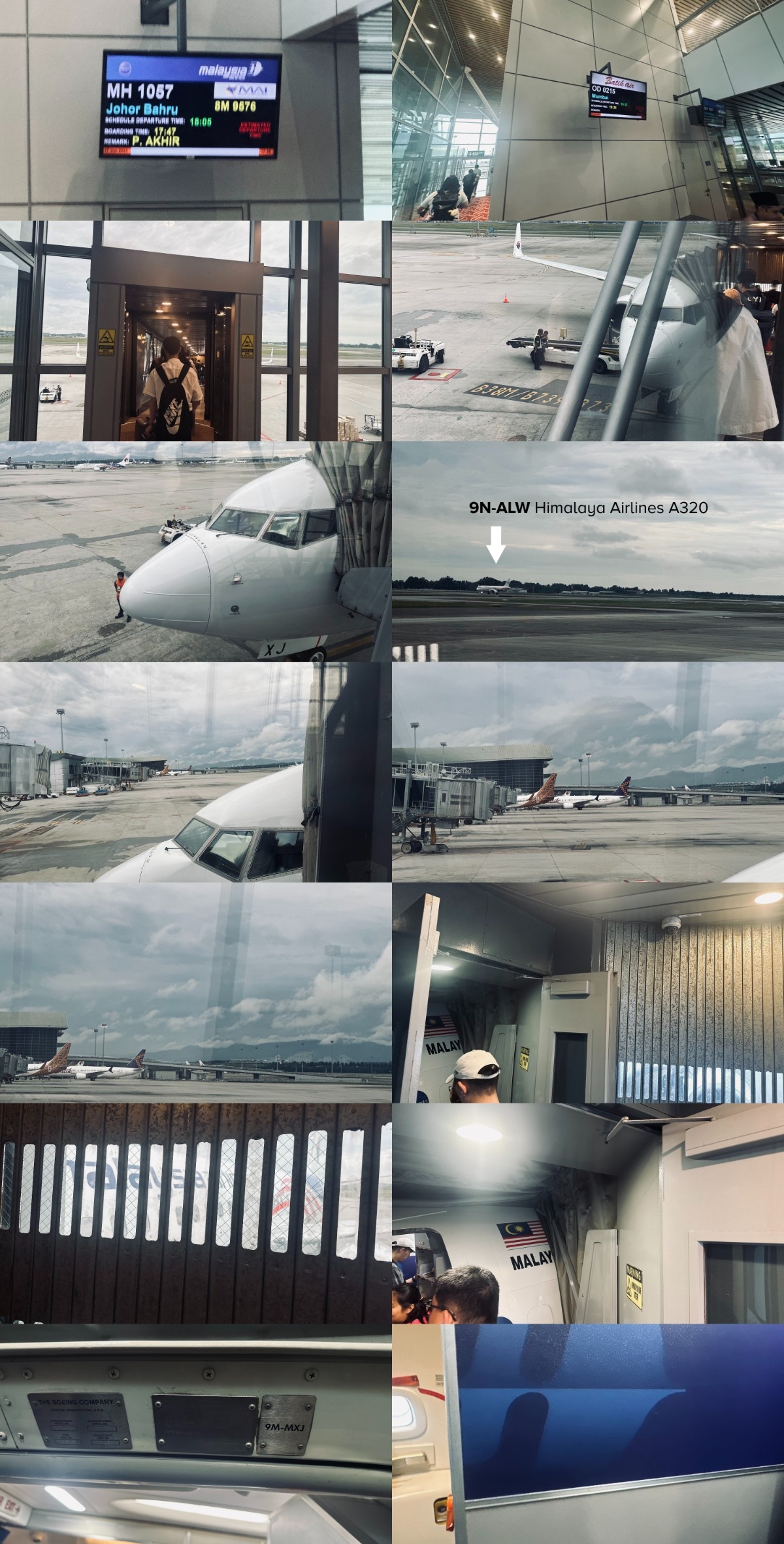
The flight: Boarding and departure
Flight: Malaysia Airlines MH1057/MAS1057
Date: Monday, 17 June 2024
Route: Kuala Lumpur International (WMKK/KUL) to Johor Bahru–Senai (WMKJ/JHB)
Aircraft: 9M-MXJ, Boeing 737-800
Age: 11 years 10 months at the time (built: 25 July 2012, delivered: 6 August 2012 — roughly overlapping with the duration of the London Olympics!)
Seat: 22F (starboard side, window)
Boarding: 5:50pm MYT, UTC +8
Departure: 6:30pm MYT
Arrival: 7:05pm MYT
Duration: 35 minutes
Notes:
• First flight on any 737 in 6 years and 6 days, the previous ones being on 11 June 2018 on the erstwhile Jet Airways, the Indian full-service carrier that collapsed in 2019.* This flight helped to break a six-year avoidance of the 737, the most popular aircraft of all time.
Later, in early November 2024, my first-ever 737 MAX flight took place on Singapore Airlines’ 9V-MBJ, on the early-morning SQ154 to Phnom Penh.
• Second flight on Malaysia Airlines after MH180 to Chennai (9M-MTH, A330-300) on 21 October 2022 — which was also my first flight on both the A330 and the Oneworld alliance. First Boeing flight on a Oneworld airline, given that (among the members I’ve flown) SriLankan Airlines operates only Airbus aircraft, and I have flown only the A350 and A321neo of Cathay Pacific.
(However, I flew a rare 40-minute fifth-freedom route on Qatar Airways — Phnom Penh to Ho Chi Minh City (QR971), operated by A7-BAN, a non-Qsuite 777-300ER — on 4 November, making the Gulf giant my fourth Oneworld airline flown.)
• First domestic flight within Malaysia, and first visit to Johor Bahru’s Senai Airport, which is about an hour-and-a-half’s commute from Singapore (when the immigration queues are good!). I don’t expect to return to JHB any time soon, as I’m not the most cost-conscious flyer out there, given that JHB is preferred by some Singaporeans looking to save money!
*For the record, these were flights in northeastern India: 9W699 from Siliguri/Bagdogra (IXB) to Guwahati (GAU), and 9W853 from Guwahati to Kolkata (CCU), which would be my final flight on Jet Airways before it collapsed the next year.
Fittingly enough, the 737 operating the latter flight (VT-JGA) was built in 2002, the year in which I flew for the first time ever — on Jet Airways at that — so it was only proper that my Jet journey concluded in this way. (The following year, after 9W folded, this 737 moved to struggling low-cost carrier SpiceJet as VT-SYK, but within months it was damaged beyond repair in a landing accident.)
It felt surreal to actually be face to face with the Boeing Sky Interior screen at the entry door, and the blue cabin made it clear that 9M-MXJ was a retrofitted jet with its seatback IFE removed. I proceeded to 22F, my standard seat on a narrowbody, and at the next gate stood sister-ship 9M-MXT, which still sported the older ‘two-stroke’ livery and not the Negaraku flying-flag colours that this one (and most others) did.
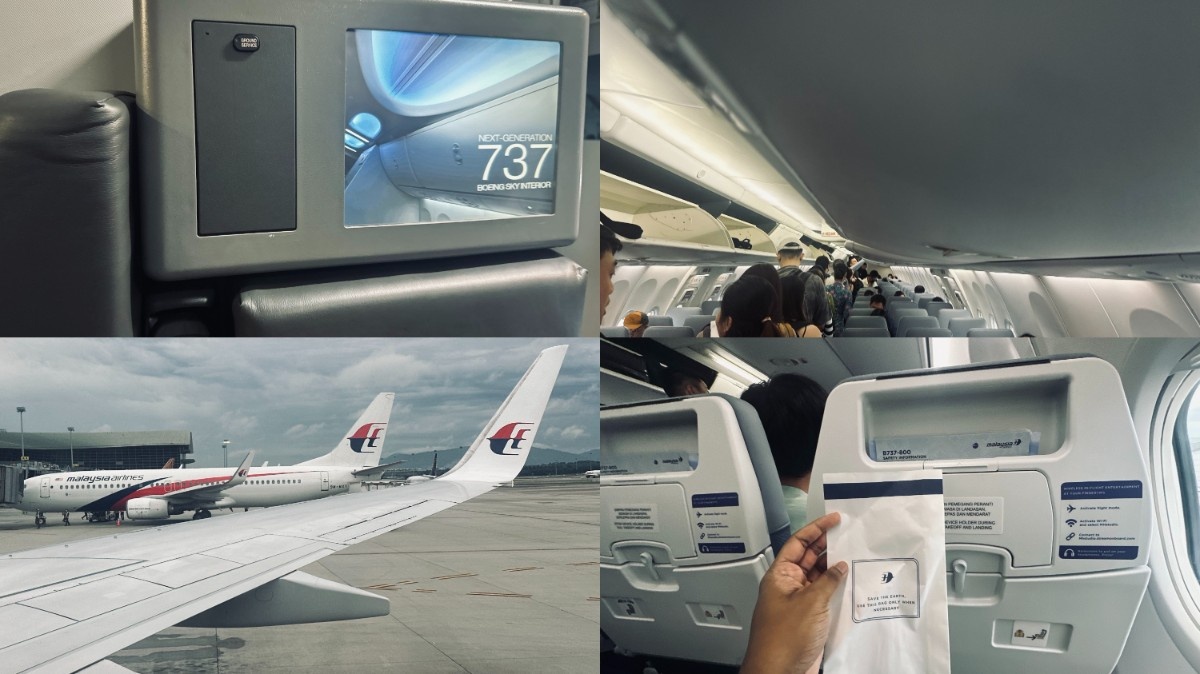
One thing that I need to give MH credit for, in spite of removing the seatback IFE on its 737 fleet, is the exquisitely designed Going Places magazine. Much like Garuda Indonesia’s revived Colours magazine, as I’d seen three days prior, MH did a fantastic job by bringing back its own publication — unlike Singapore Airlines and Thai Airways, whose SilverKris and Sawasdee remain firmly confined to a different era that ended in April 2020.
TG did convert Sawasdee to a digital format, but SQ never bothered to do so with SilverKris — other than as a travel inspo website, which is a very poor substitute for a proper physical (or even PDF) magazine. Too bad they only have duty-free brochures today, as does SriLankan, so MH has done very well to stay authentic and true to a printed glossy postpandemic.
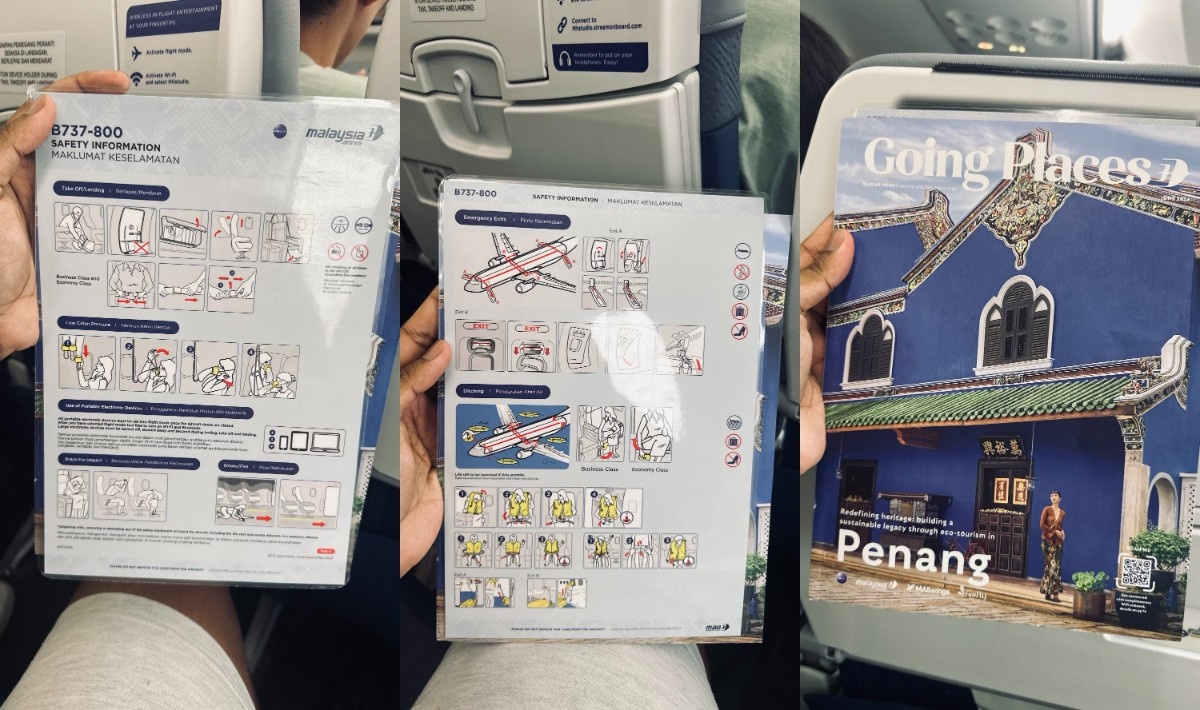
More to the point, this is a highly Westernised magazine with pitch-perfect informal English: much like its alliance partner’s eponymous Cathay magazine, and a world away from the very insular and domestic-centric Heritage magazine of Vietnam Airlines. Credit for this goes to Ink Global, the London-based print media company with an office in Singapore, which has designed some spectacular magazines including SQ’s SilverKris, Qatar Airways’ Oryx and Etihad’s Atlas* — in addition to Ethiopian’s Selamta, as I read on two flights between Singapore and Kuala Lumpur in summer 2023, which is an eye-opening insight into the wonder that is Africa’s pulsating culture.
Oooh, look at the dainty headline fonts, and the pairing of serifs and sanses! And the clean layouts and pictures! And the local flair! This is something that, IMHO, Ink Global does best — and, what’s more, unlike Ethiopian, MH has an outstanding corporate brand font too: far and away the best in Southeast Asia, ahead of even SQ. (Full resolution here.)
*While SilverKris and Oryx were never brought back after the pandemic, Atlas was… but not by Ink. Instead Etihad went for a different publisher, which is a shame. Kudos to Ethiopian and Malaysia Airlines for persisting with Ink with their revived physical magazines!
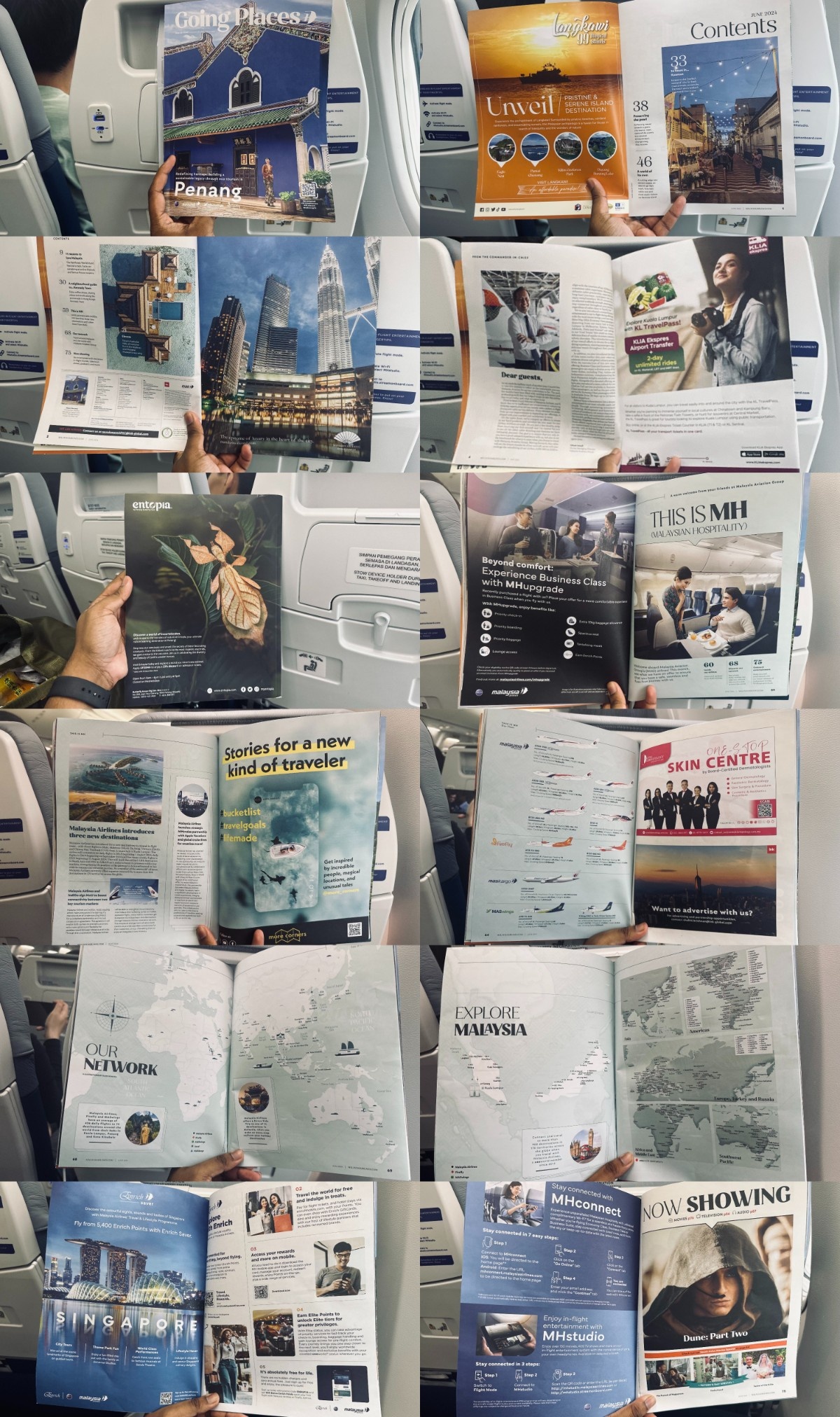
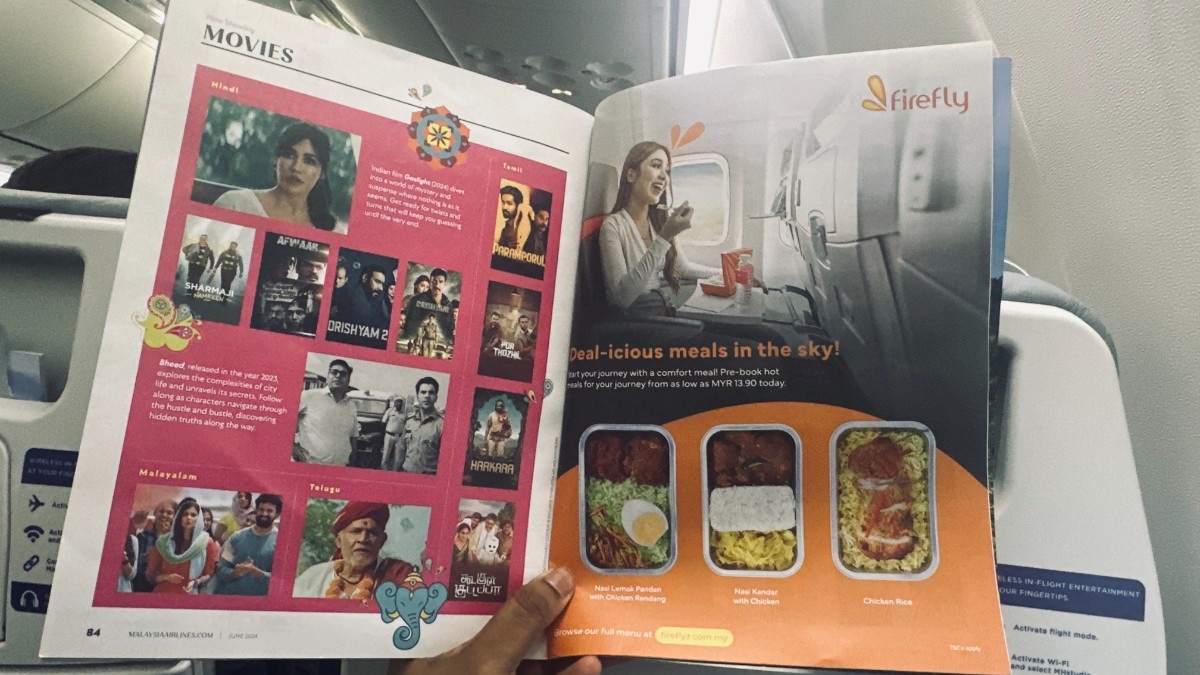
All that gushing over the magazine aside, these are some self-explanatory captions that I’d written as I settled in my seat. No need for extra commentary.
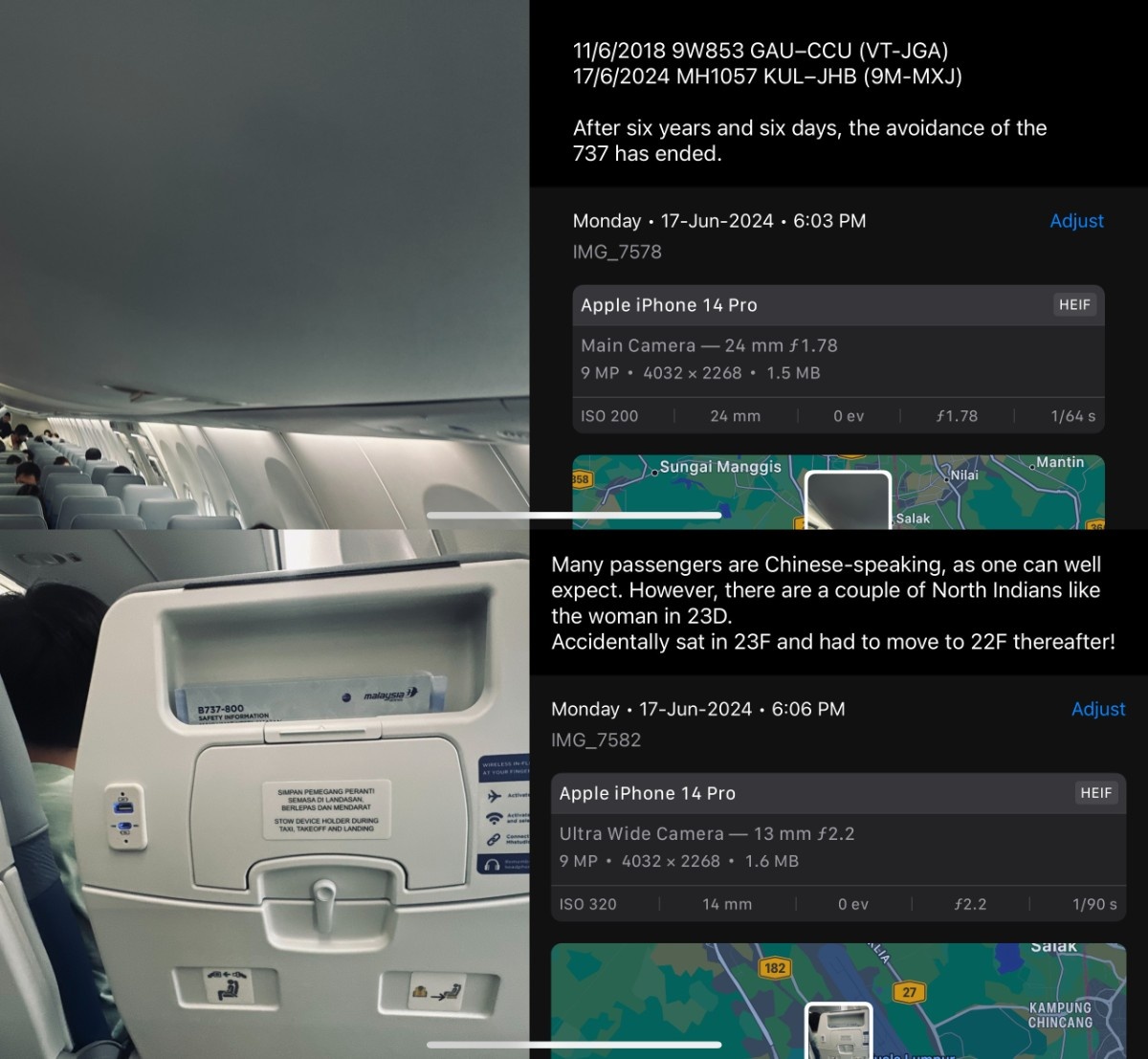
As the manual safety demo was completed and the plane pushed to the runway, I shared with my family the significance of flying the 737 after so many years of steering clear of it.

From here on out, the descriptions are going to be somewhat boring. It’s a 40-minute domestic sector; what did you expect?
At half-past six, the plane got rolling, with sweeping views of the local A330-300s (MH and Batik) and the Turkish 777-300ER.
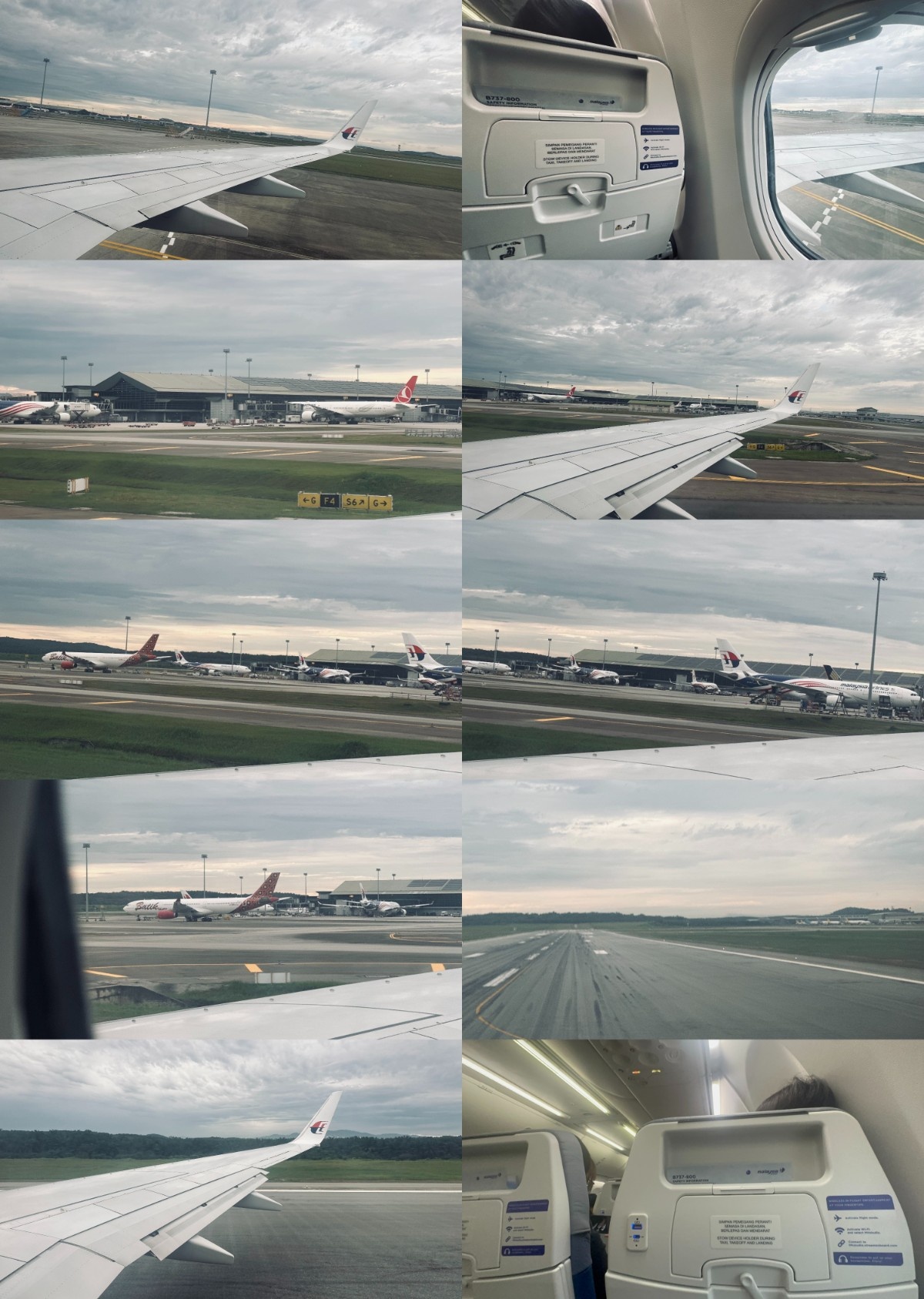
All too soon X-ray Juliet was airborne, taking off amid the acres of palm plantations that are as distinctive of KUL — located as it is near the coast — as ships in the sea are of Changi. The 737 did a few turns above the verdant green of the natural jungle and the riverside urban jungle, before proceeding down the western coastline of the Malaysian peninsula.

A very small taste of the streaming entertainment (and Montserrat, WHY?!)
On my iPad I connected to the MHstudio streaming entertainment system, which was a good enough replacement for the older seatback IFE screens before the 737 retrofit. This is something that Batik Malaysia often fails to provide on its own 737s — some with no screens at all, others with switched-off displays. I’ll see what they come up with when I fly them in early February 2025, but I’m keeping my expectations low, certainly lower than MH.
Look, I’ll be the first person to say that Malaysia Airlines’ typography game is FLAWLESS in almost every way. But now I would pe proved wrong. To my horror, MHstudio was filled with the same goddamn Montserrat font that bargain-basement carriers like Scoot use (as does Air India Express, but at least there’s a bespoke font too) — and, for that matter, SQ’s KrisWorld IFE on non-A350 Medium Hauls.
I didn’t expect this from you, MH! :(

As you might expect, the service was brief, crisp and to-the-point, with bottled air mineral semulajadi and salted peanuts being the extent of the service. That’s reasonable enough, though Ethiopian served a small sandwich when I flew them between SIN and KUL (twice) in 2023. Perhaps only Qatar Airways is known for going all-out with a full meal on 40-minute sectors, which is why One Mile at a Time calls it the world’s best short-haul business class.
For comparison, SQ served only a cup of apple juice when I flew them on the SIN–KUL sector in October 2022 — that too on 9V-SMF, the 10,000th Airbus aircraft ever produced — before I connected to my first-ever flight on MH and the A330.

All too soon, well within half an hour, the plane had all but approached the southern tip of the peninsula. Who even needs MHstudio when you can enjoy breathtaking views like these, replete with a winglet?

Interestingly, the captain’s announcement close to arrival mentioned the temperature (36°C) in Johor Bahru, and with Hari Raya Haji being a national holiday in this Islamic country, he wished passengers the same.
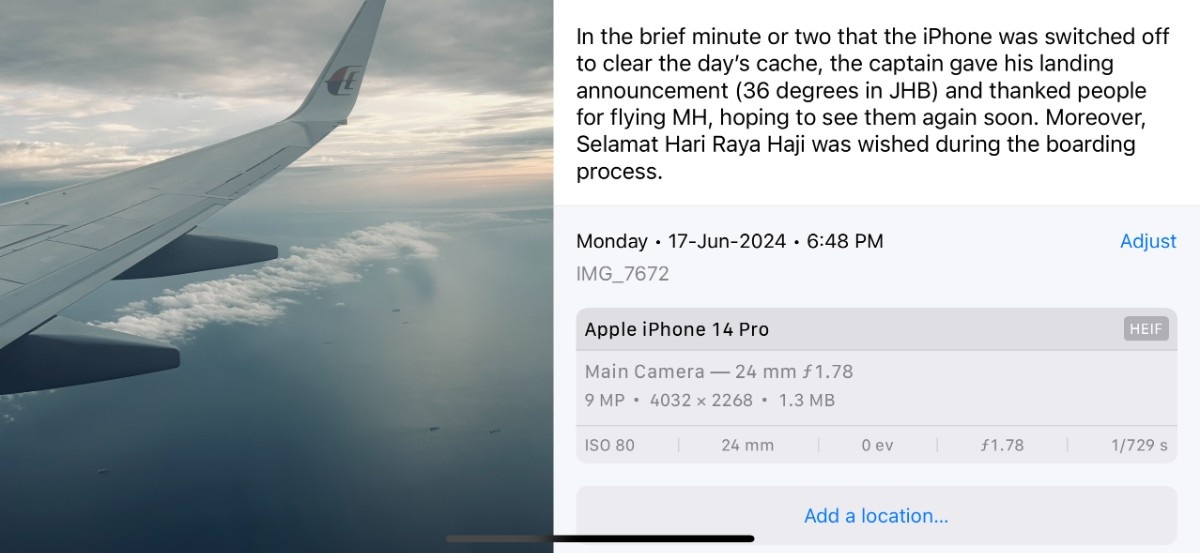
Landing at Johor Bahru for the first time — and probably the last in a long time
Shortly after seven, the plane skimmed over the arid fields close to Malaysia’s southernmost city, and made a smooth landing at Senai Airport, which lies northwest of Johor Bahru.

As with many small airports, there was just the one plane parked at the terminal: 9M-AJP, an AirAsia A320 in ‘I ❤ Kelantan’ livery. Not too different from Trivandrum or Thiruvananthapuram (TRV), India’s southernmost airport, where I flew recently (December 2024) for a wedding — a homely little airport by the Kerala coast, but with plenty of Middle Eastern service as you’d expect from that state.
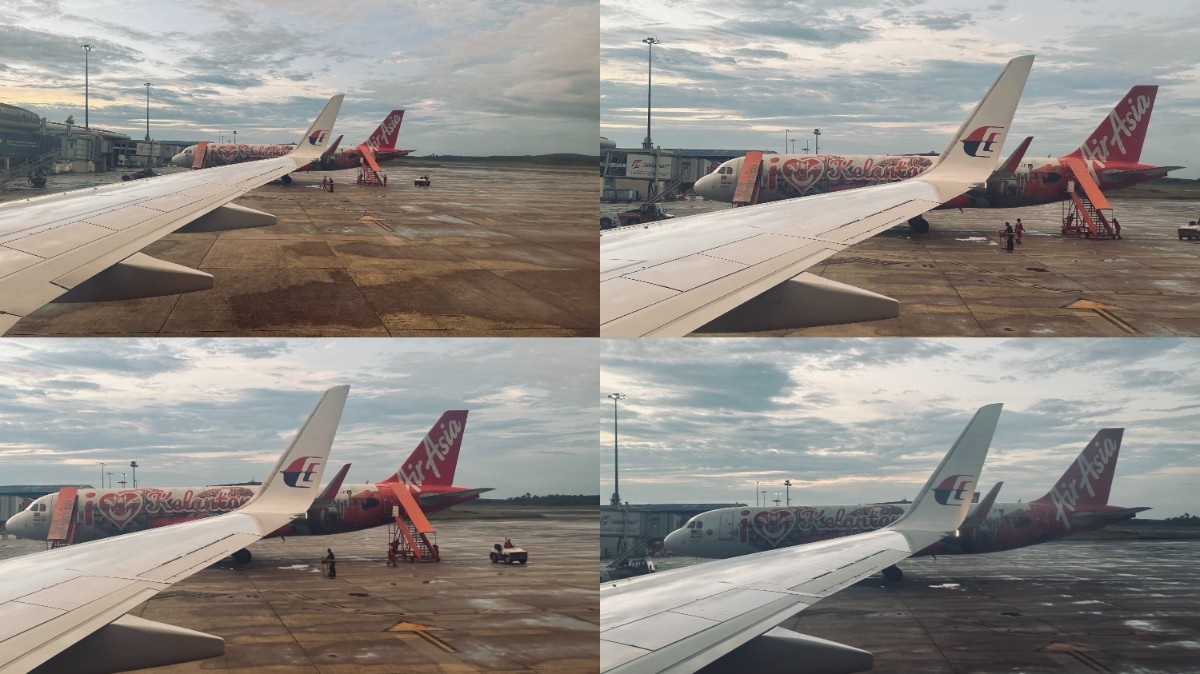
This was my very sentimental, quickly-drawn-up journal entry for the flight, headlined by the trademark pointy nose of the 737.

All too soon, I had to deboard, but guess what I saw just above the exit door? You guessed it: tucked away on a small panel above the door was a quote so inspiring, I knew immediately that it would be the cover image of this report. In two beautiful lines, my experience of beating my fear of flying 737s was summed up, and it turned an otherwise unremarkable flight into a lifelong memory.
<i style="">Don’t be scared to fly alone / Find a path that is your own. — Quote above the entry/exit door of 9M-MXJ

Its significance was so great that I could not help passing it on to my parents. Coincidentially, the time was 7:17, another Boeing aircraft, but not as pointy-nosed as the 707/720, 727 and 737.
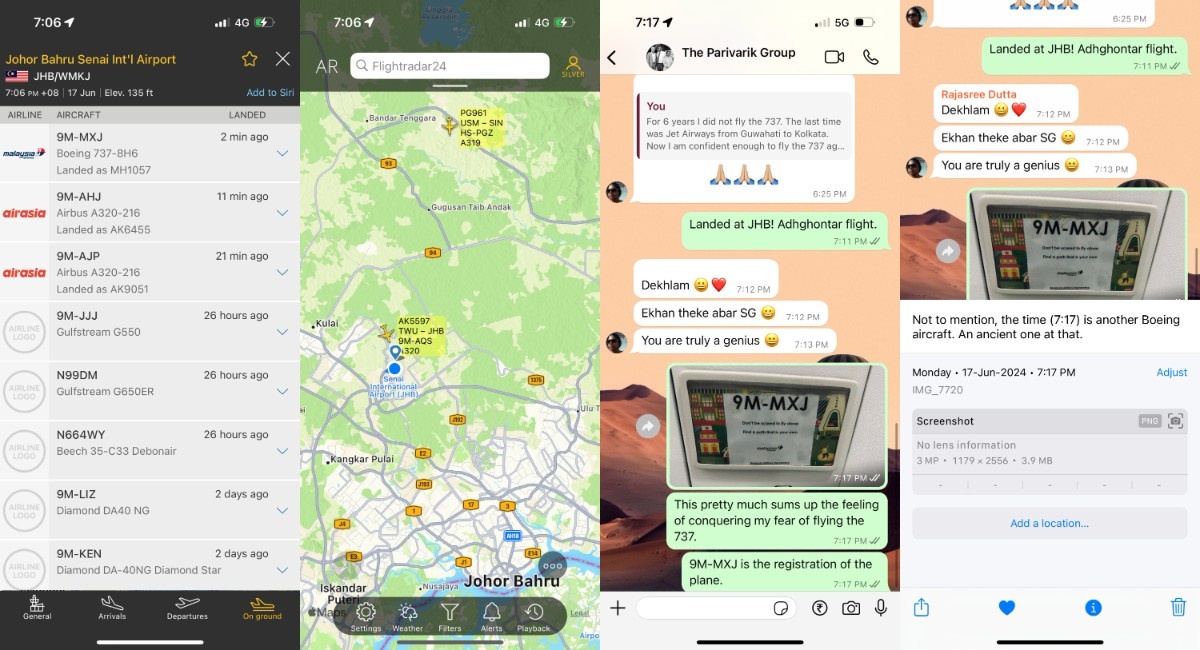
Now I wished the cabin crew a Selamat Hari Raya Haji and stepped onto the jetbridge of this regional airport that’s mostly domestic, but has a good handful of short-haul international flights. And I could finally get a proper view, which I couldn’t in Kuala Lumpur, of the first 737 that I flew in 6 years and 6 days.

A quick meal before heading all the way down to the checkpoint
Senai isn’t a grand airport by any means, just a gets-the-job-done one, but it does it fairly well. Immediately outside the domestic arrival gates at JHB was a very elegant Burger King, followed by a few hoardings for luxury hotels and properties.
This is more than can be said for Trivandrum (TRV), as I mentioned above, which is a similar small airport but feels even smaller because of its tiny size and lack of retail outlets. Even though it’s now owned by the Adani Group — which operates Mumbai, one of my favourite airports out there — the smallness from its government-owned days is all-pervading. That said, you can get from the aircraft to the taxi stand, with bag and baggage, in ten minutes flat.

As people milled around the baggage-claim belts, I collected mine and proceeded swiftly to the exit, where there were a number of fast-food restaurants — including Chutneys & Chai, a North Indian café I never expected to find in Johor Bahru, much less its small airport!

I wasn’t very impressed by the stale KFC food, and was looking for something better. Before that I took in the views of the arrival hall, with tall banners promoting tourism in the state of Johor.

Firefly and Malaysia Airlines had placed a number of cube-shaped standees all over, promoting one-stop connections via Kuala Lumpur to global destinations. As an example of competitive advertising, the local giant, AirAsia, had a huge ad spanning the length of the ceiling — as if to show who’s the real boss!
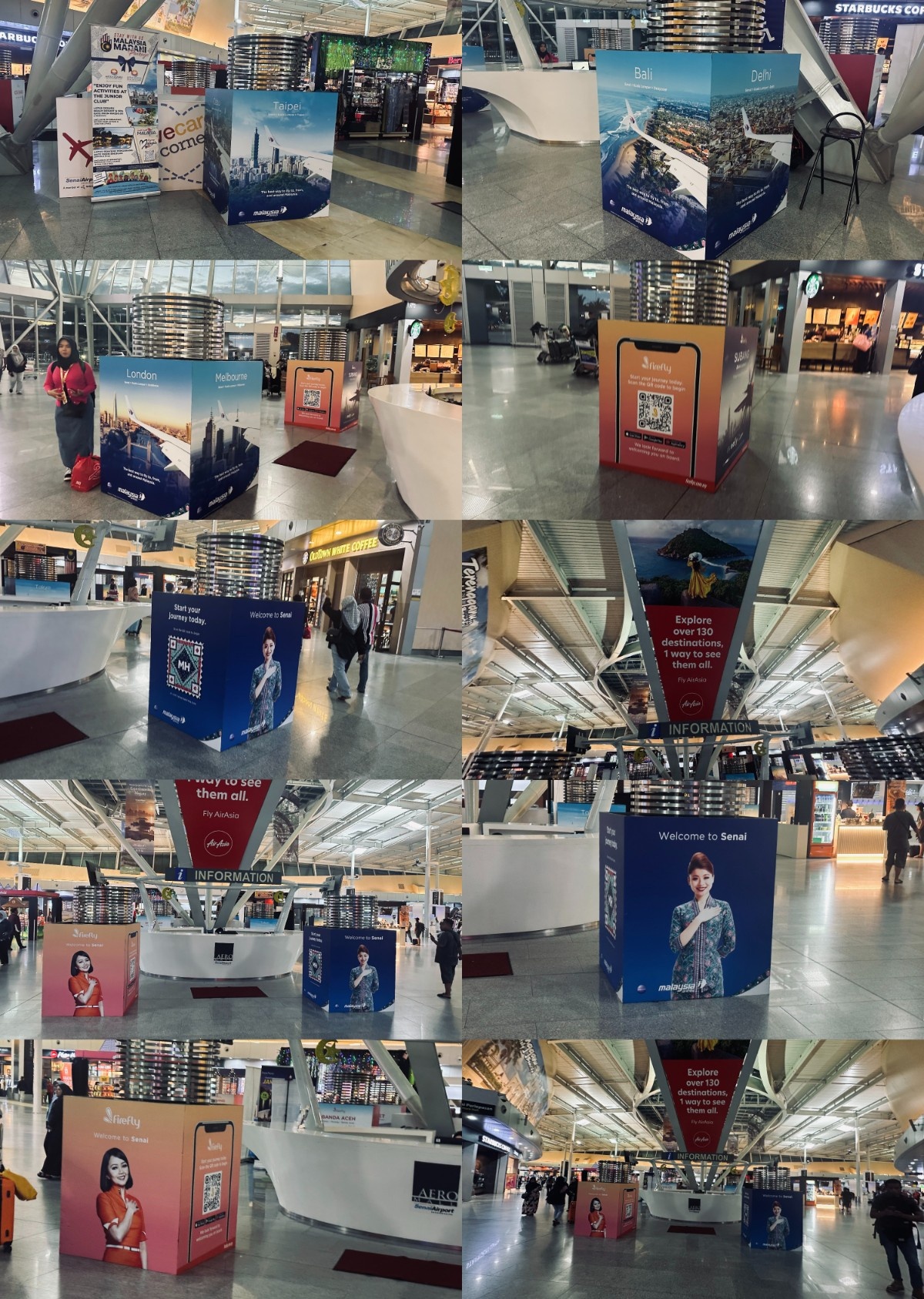
Bored of the eateries in the arrivals hall, I headed back inside a bit, and was pleasantly surprised to find a Marrybrown — Malaysia’s largest homegrown fast-food chain — there. To my delight, they were serving a tom yum chicken burger combo for only MYR 20.50 (roughly US$4.50 or S$6.25), a fraction of what it’d cost in Singapore.
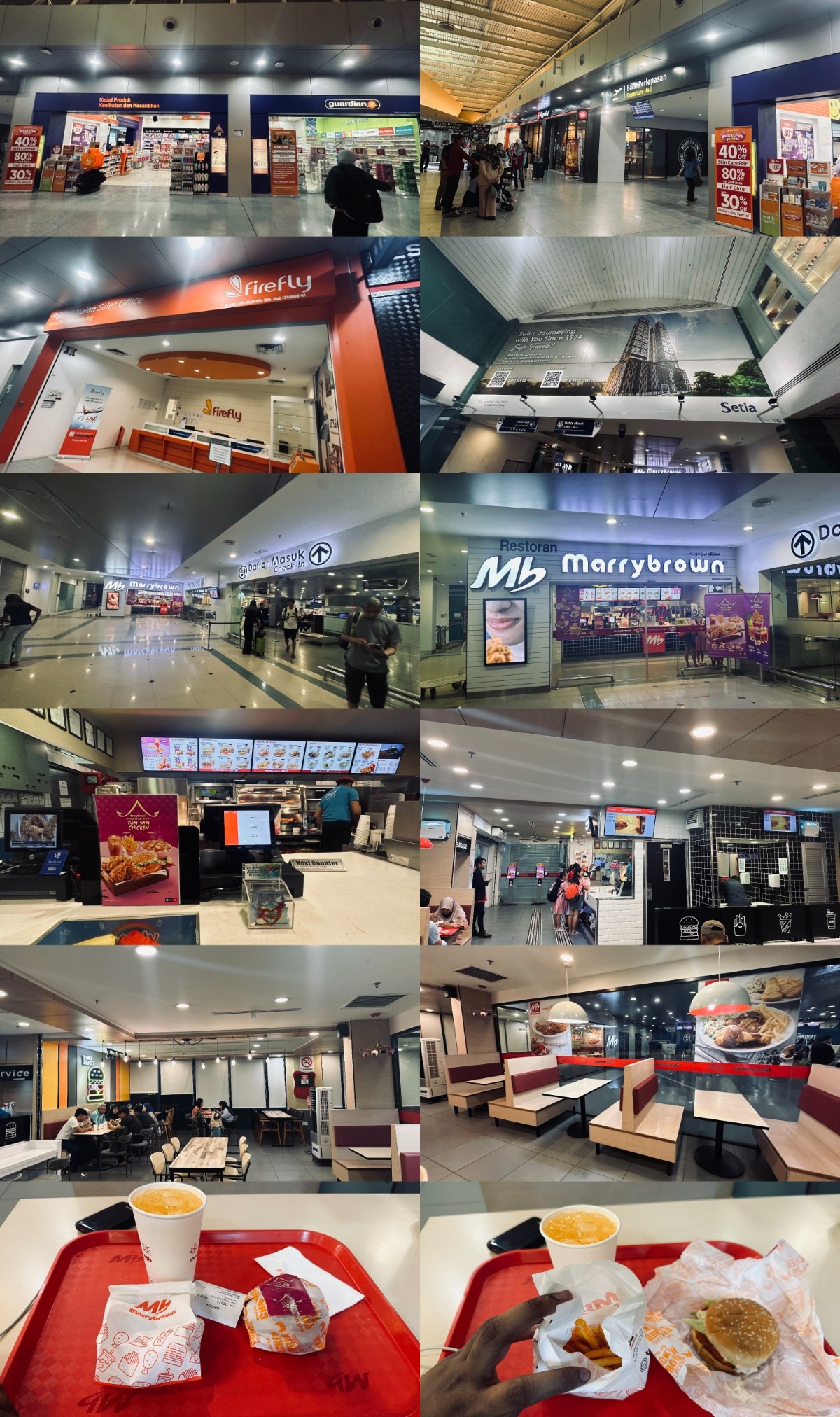
It was here that I ironed out my journal entry by adding a few more details to it, and it was against this backdrop — people (including me) guzzling on their burgers and fries! — that I captured this poignant memory.
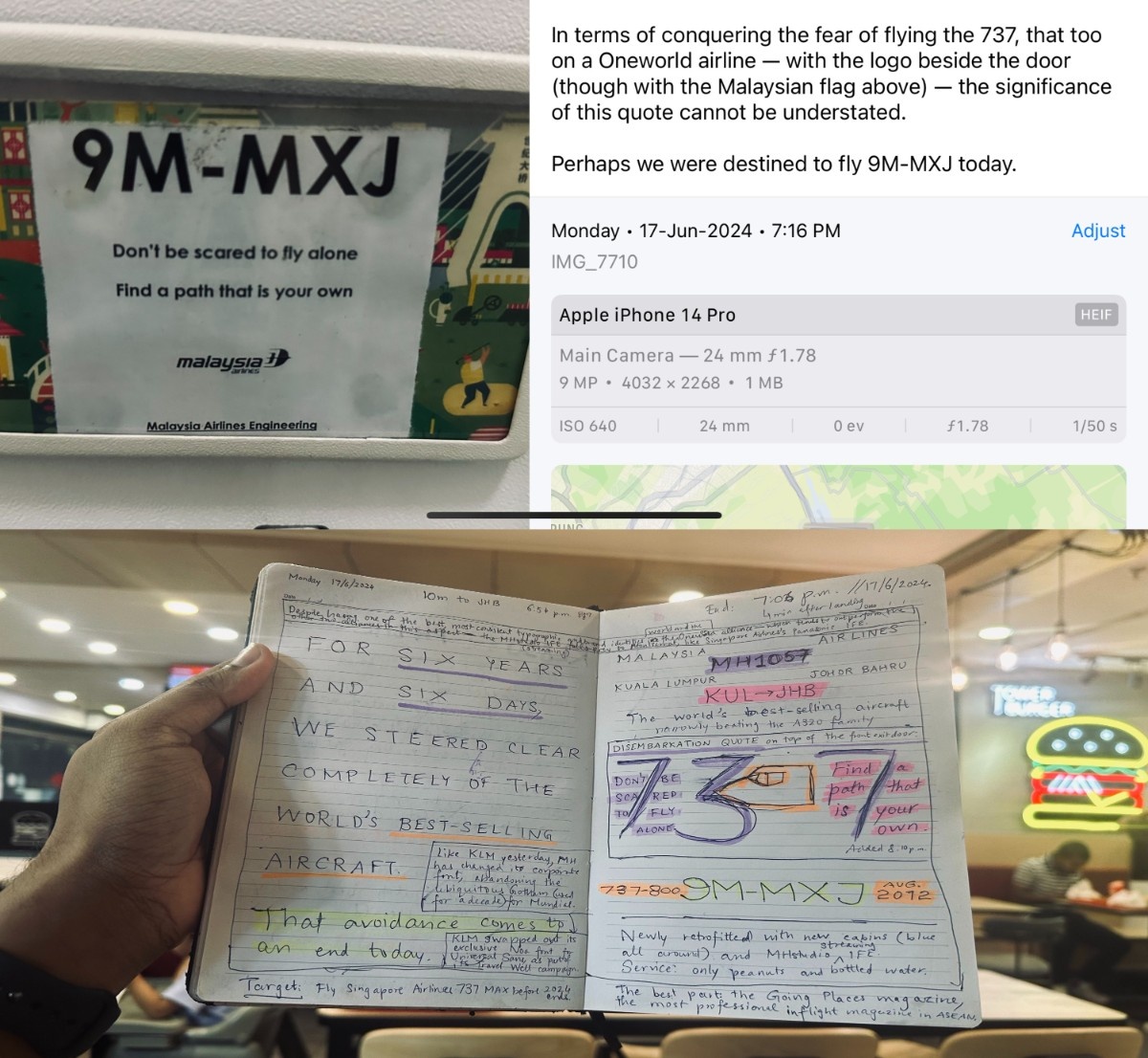
These were some more messages to my parents — where my mom asked whether this was the same model that disappeared a decade ago (yes, it was also Malaysia Airlines; no, it was not a 737) — and some captions that I’d written at the time.
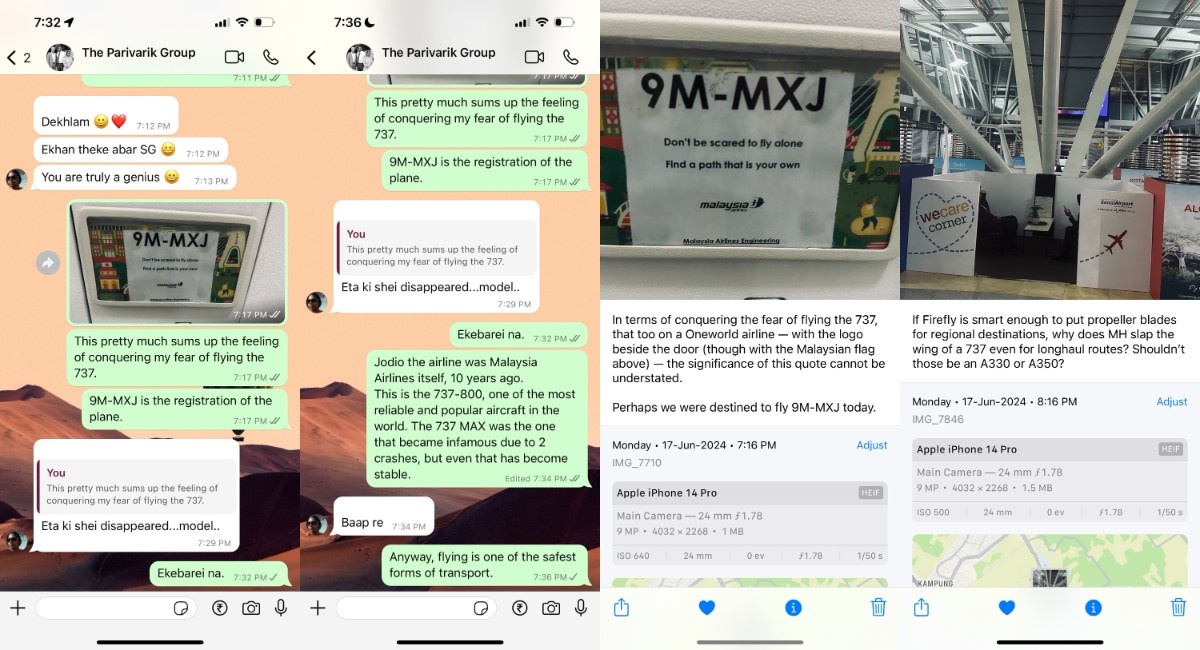
As you see above, ‘if Firefly is smart enough to put propeller blades for regional destinations and 737s for slightly bigger cities, why does MH slap the wing of a 737 even for longhaul routes? Shouldn’t those be an A330 or A350?’ Anyway, MH and FY put some of the greatest effort and care into their brand appearance among Southeast Asian airlines, and it shows.
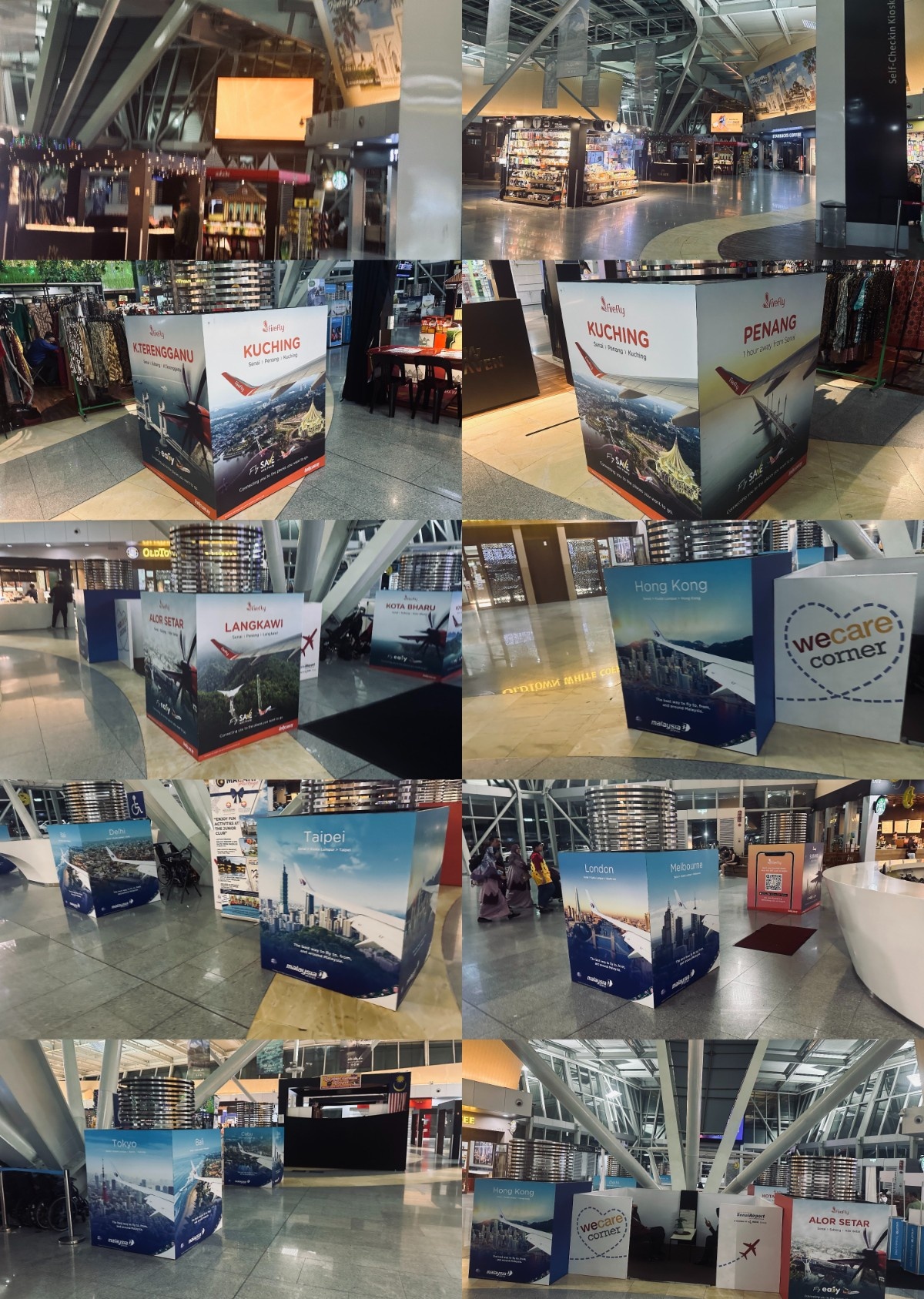
After a couple of cancellations owing to traffic, yet another Perodua Bezza turned up at a quarter past eight, which would take me all the way from Senai Airport — with a clock tower located just outside — to the Sultan Iskandar CIQ complex across the strait from Woodlands in northern Singapore, as covered in the Tourism Bonus below.
Let’s just say that I hope I don’t have to return to JHB any time soon: not that it’s a bad airport (not at all), but because living a stone’s throw from Changi spoils you silly!
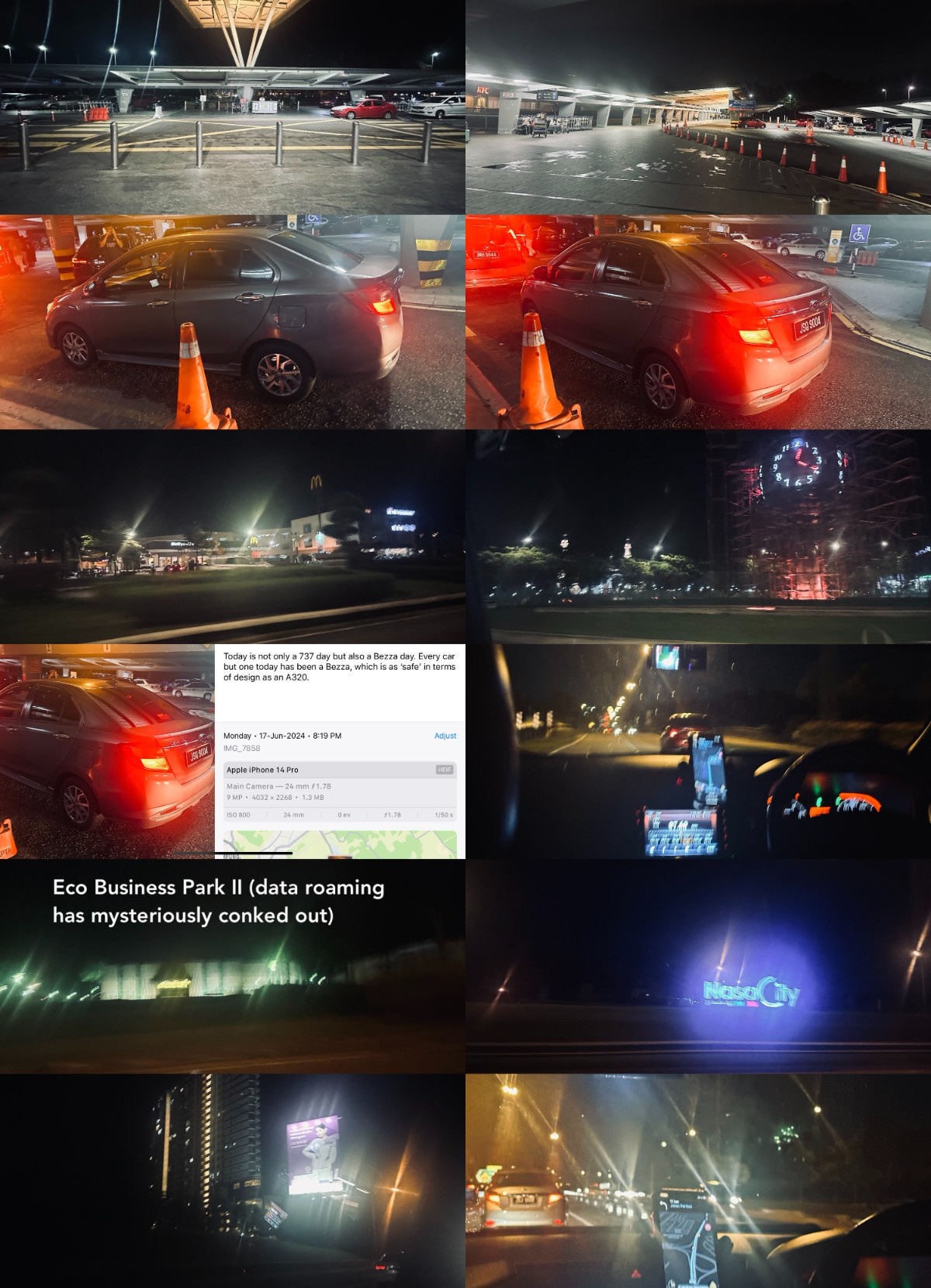

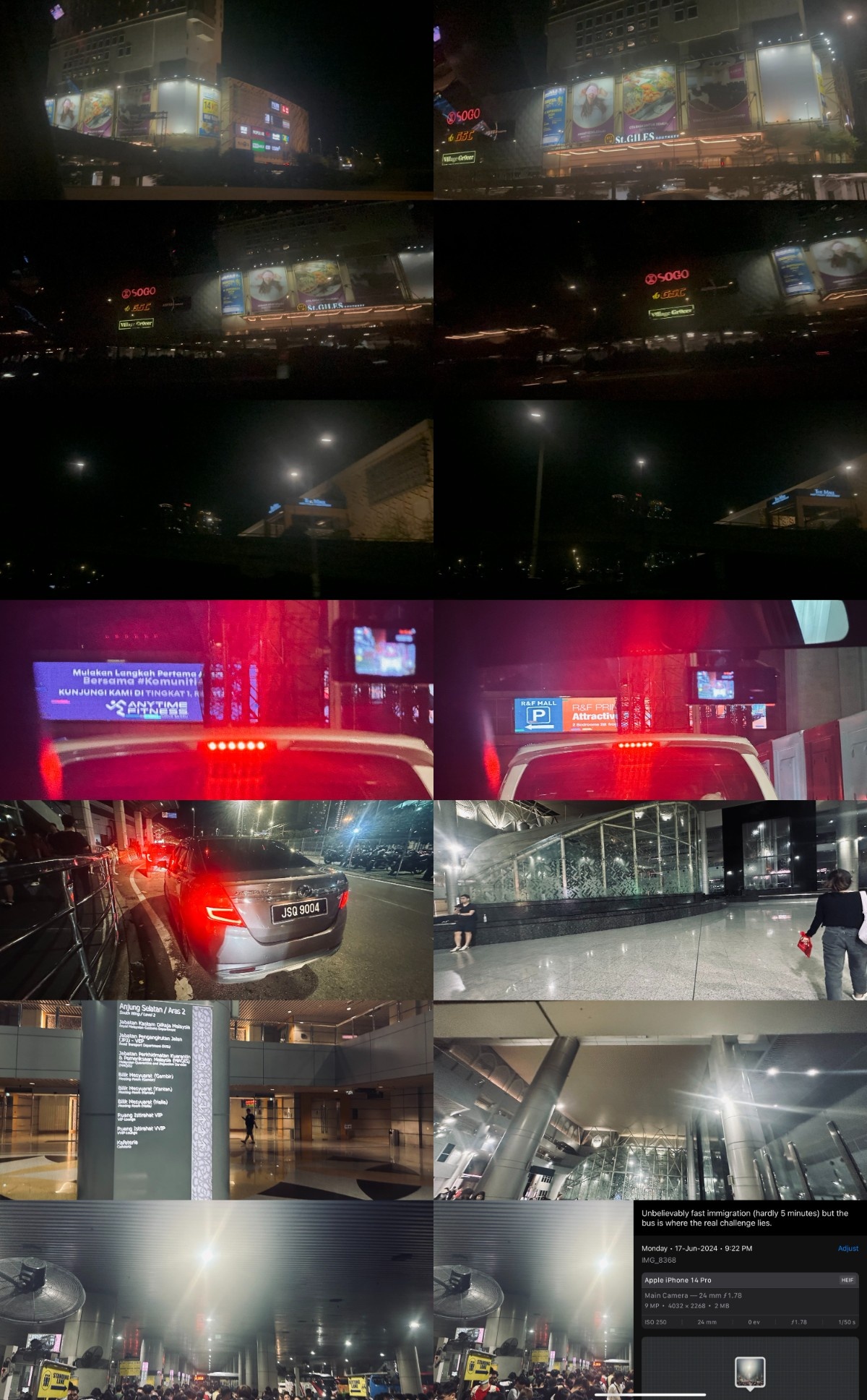
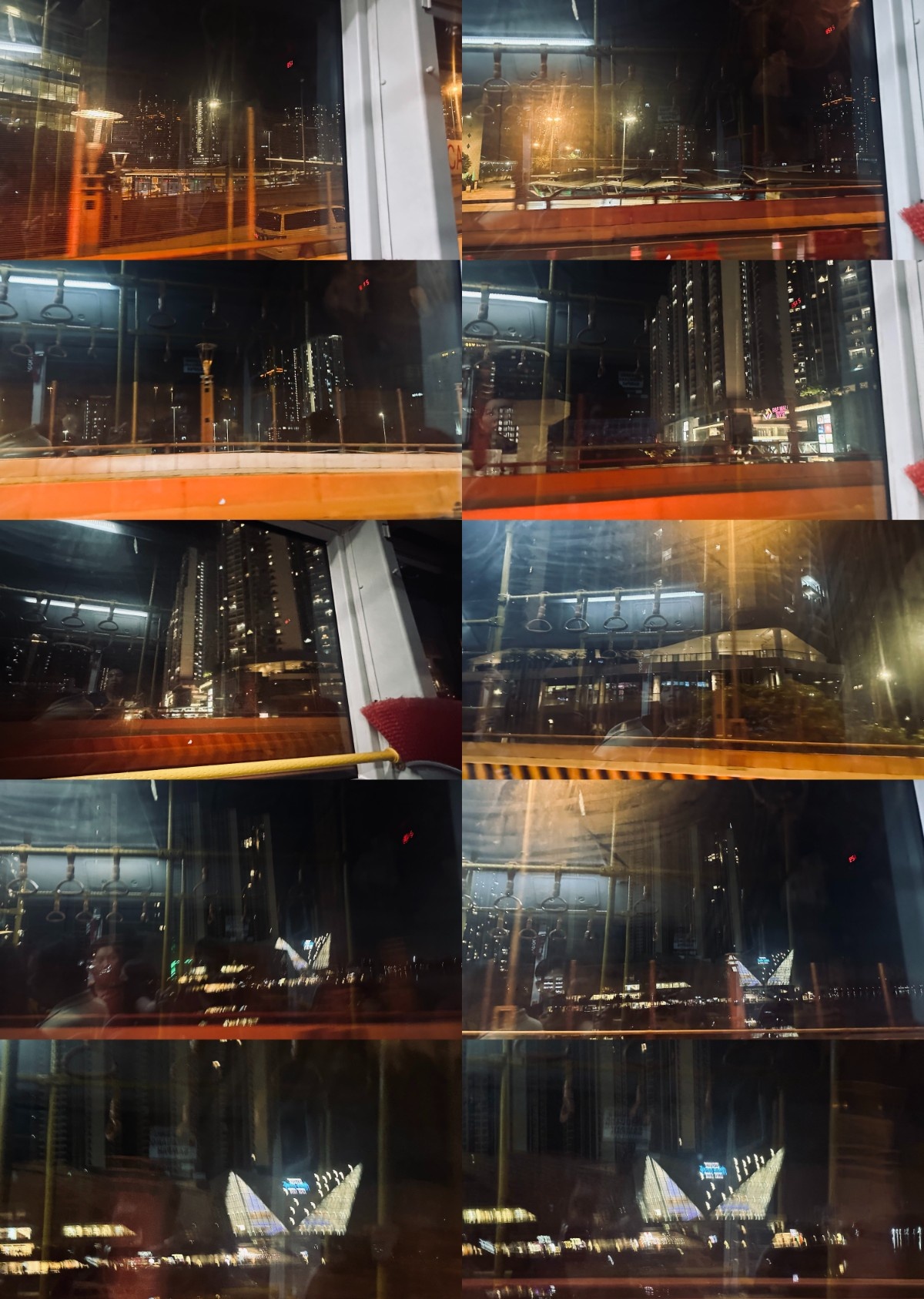
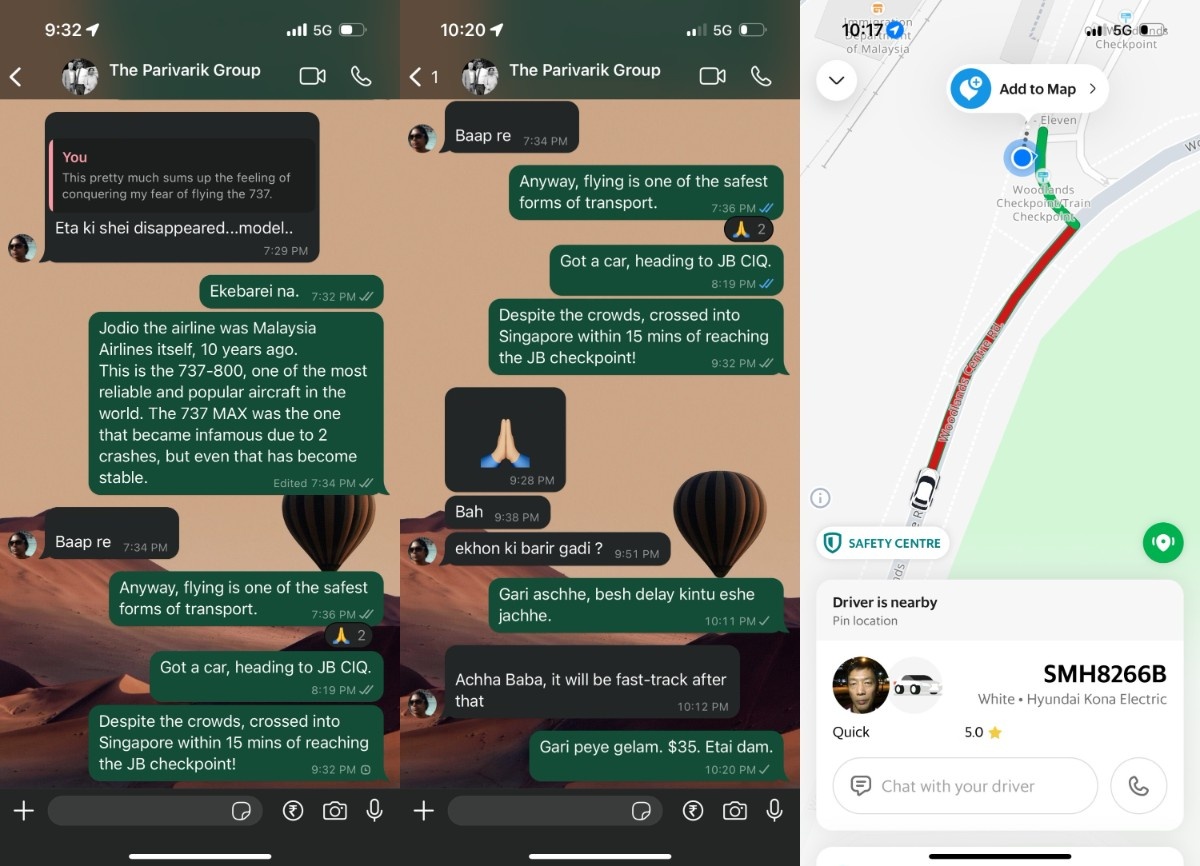
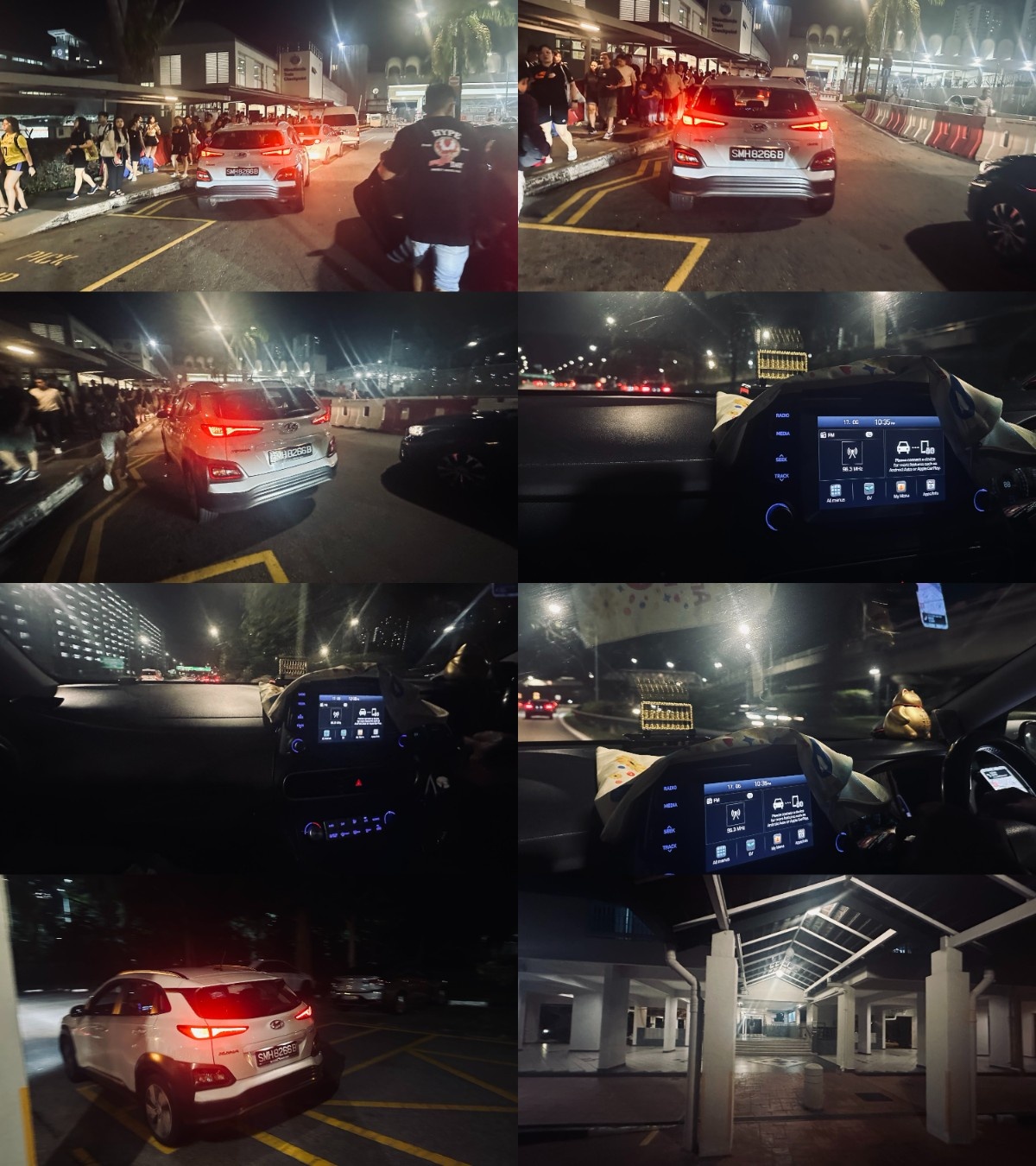

Congrats on conquering your fear of the 737 (a fear that I still have)! MH's 738s don't look too bad. The BYOD IFE from what I see is a similar situation to a typical flight on American's short-haul fleet. I also wish that the big 3 here in the US would bring back in-flight magazines, especially on planes without seatback IFE. I enjoyed your report!
nice trip report on the malaysia airlines 737 800 i do manage to overcome the fear of 737 800 on my recent trip to jeju with eastar jet overall the 737 800 is safe enough to fly again and nice to see the byod ife product on the refurbished 737 800 especially on short haul flights hope this is the nice trip report to jb senai airport and enter thru land crossing without filling up the sgac
Hi Proximanova!
Great report as always, enjoyed seeing my home carrier being featured on FR! In my experience, the MHStudio IFE works as well as if not better than the old 737 AVOD screens, which were old and sometimes clunky 😂. Firefly on domestic jet flights actually provides more service than MH, giving passengers cookies, peanuts (in FY packaging but identical), and the quintessential MH group water bottle 😇. Senai Airport, while being the only major privately-owned airport in MY, is actually quite busy during the daytime and serves as a major transfer point for both Singaporeans and Malaysians heading to other ASEAN countries...
Fun fact, I was at that exact Marrybrown 1.5 months ago during my trip home to East Malaysia, I flew into SG and stayed a few days in Johor before flying home...
Thanks for posting
VH-YQW 😉
Just noticed your username! VH-YQW. Miss the old Qantaslink 717's. And VH-YQW is a particular aircraft I spent many years working on